Travel | September 14, 2022

The 250-Mile Trans Bhutan Trail Will Reopen After 60 Years
After a major restoration project, the path connecting 400 cultural and historic sites is once again passable
:focal(640x427:641x428)/https://tf-cmsv2-smithsonianmag-media.s3.amazonaws.com/filer_public/c9/e0/c9e047c1-87f8-452c-ad60-761c8033d3af/walking_away_from_tangsiji_bumthang.jpeg)
Jennifer Billock
Travel Correspondent
On September 28, His Majesty the King of Bhutan will join hundreds of Bhutanese children in Trongsa as they take the first official steps onto the newly restored and reopened Trans Bhutan Trail . The moment is more than 60 years in the making, allowing the Bhutanese people—and tourists—to walk in the footsteps of their ancestors.
The Trans Bhutan Trail, which was originally part of the Silk Road, is a historic pilgrimage route, dating back thousands of years and running east-west across the country for 250 miles. About 500 years ago, the path connected a series of dzongs , or fortresses, that were used to thwart invasions from foreign militaries. Buddhists followed it to reach sacred sites, like the Druk Wangyal and Trashi Choeling temples. Trail runners called garps carried messages along the trail for the political powers at the fortresses, with administrative orders to political alliances and other secrets. And before Bhutan gained independence from Britain and became a country in 1907, the trail allowed the various Himalayan kingdoms along the route to communicate and stay unified as one group fighting together for the territory. For the 50 years after reaching countryhood, the Trans Bhutan Trail was the only way to cross from one end of Bhutan to another.
In the 1950s, however, the government started building a highway across the country. “The highway followed significant parts of the original trail,” says Sam Blyth, the founder of the Bhutan Canada Foundation (which led the initiative to restore the trail), and a trustee of the Smithsonian’s National Museum of Natural History . “When the highway was complete, people stopped walking the trail and got into buses and cars and used the highway.” As a result, the trail began to fall apart. Bridges, stairways and footpaths decayed and became unusable. “Sometimes when the footpaths and bridges collapse, it divides [locals] from relatives on the other sides of the valleys and separates them from lands where they were farming,” Blyth says.
/https://tf-cmsv2-smithsonianmag-media.s3.amazonaws.com/filer_public/3d/fd/3dfd37a0-19c6-407f-8fc3-dacdf988491d/trans_bhutan_trail_map.png)
The Bhutan Canada Foundation, an organization with a mission of strengthen well-being and happiness across Bhutan and maintain positive Canadian and Bhutanese relations, along with visionary support from King Jigme Khesar Namgyel Wangchuck, decided in 2018 to fund and fix the route. The project involved clearing all 250 miles of the path and rebuilding or restoring 18 major bridges and more than 10,000 stairs. It was a boon for the Bhutanese people during the pandemic, too—more than 900 furloughed local workers took jobs working on the restoration.
Today, the trail is once again passable from Haa in the west to Trashigang in the east, connecting 400 cultural and historic sites. International tourists on the trail are required to go with a local guide, whether they’re hiking it (which would take about 27 days) or biking it, regardless of group size. As of now, the trail has signage and trail blazes, but no mile markings. A map and app are both in the works.
“When I first went to Bhutan in the 1980s, I walked the country with some people who walked the trail as children,” Blyth says. “I’d always heard of this legendary trail and experience, because it had a big impact on very young children. So when the time came, it was really easy for me to see that this thing really could capture the imagination and would be both a physical experience and educational experience, and to many a spiritual experience.”
Bhutan leadership expects the trail to become part of the national curriculum, Blyth says. Young children will use it to explore local plants and animals, and everyone under the age of 18 will spend a year working on and walking along the trail as part of a national service program. Those who walk the entire length of the trail will earn a certificate of completion and a medal.
Heading from west to east, here are five spots along the trail that hikers or bikers won’t want to miss.
Dochula Pass
/https://tf-cmsv2-smithsonianmag-media.s3.amazonaws.com/filer_public/9f/73/9f733e50-215b-40e9-add7-836a7ba7cd3a/gettyimages-959796736.jpg)
Dochula Pass , close to Thimphu in western Bhutan and about 73 miles into the trail, offers much more than stunning panoramic views of the Himalayas from 10,200 feet up. While here, take some time to explore the Druk Wangyal Lhakhang (a temple built to honor Bhutan’s fourth king, Jigme Singye Wangchuck) and the Druk Wangyal Chortens . At this latter site, 108 chortens—small shrines or monuments—line the pass, and you can help locals hang prayer flags to honor the gods. Nearby, just above the pass, 11 manmade meditation caves painted with different gods and goddesses are set into the hillside. They too were built to honor the fourth king, and all of them have a visual representation of his birthday, November 11, 1955.
Punākha Phuntshochoeling Heritage
/https://tf-cmsv2-smithsonianmag-media.s3.amazonaws.com/filer_public/78/e5/78e5dfbe-36c9-4869-a8b5-b706f7fb2566/trans_bhutan_trail_history.jpg)
At 5,000 feet of elevation and about 105 miles into the trail, Punākha, in west-central Bhutan, served as the capital of Bhutan from 1637 to 1907 (today it’s Thimphu). Two rivers, the Pho Chhu and Mo Chhu, converge here—and at the confluence is Punakha Dzong , the second-largest fortress in the country. Visitors to the fortress can see the preserved body of Zhabdrung Ngawang Namgyal, a Tibetan Buddhist lama who unified the regions of Bhutan into a country-like state in 1634.
Punākha is fairly rural, something the residents celebrate. For Sangay Choden, owner and host of Punākha Phuntshochoeling Heritage homestay, offering lodging and traditional food (like red rice, a potato stew called kewa datshi , and a vegetable and gravy dish called phaksha paa ) to guests at her heritage farm near town is an opportunity to teach them about rural Bhutanese life.
“The trail can help people in the community develop, and at the same time, people who pass by can learn about life in the village,” she says. “Mostly it’s to do with preserving our culture and tradition.”
One of the ways Choden does this is by treating guests to a hot stone bath, a wintertime tradition for Bhutanese villagers. A wooden tub is filled with river water, and Artemisia leaves—things like mugwort and wormwood—are added. The bath is heated by river stones, roasted on a fire until they’re glowing and then placed inside a wooden chute next to the tub. At the bottom of the chute is a wooden grate that allows the water to flow around the rocks.
/https://tf-cmsv2-smithsonianmag-media.s3.amazonaws.com/filer_public/2d/d7/2dd71f73-9220-49a5-bec9-569bc4229c61/chendebji_village_view.jpg)
Tour guide Galay Tenzin, who was appointed by the government to work on the trail, inspected the trail and took photos. It took him 35 days.
“It was a privilege to walk in the footsteps of our ancestors,” Tenzin says. “The trail comes to life when there is community around it. I would encourage everyone to talk with the community. You can use a local guide to translate. You really get the old hidden stories about Bhutan.”
The area around Chendebi, a village in central Bhutan about 153 miles from the trailhead, is Tenzin’s favorite part of the trail, thanks to the stories told by the people he met there. A homestay owner told him about a vengeful demon who once stalked this section of the Trans Bhutan Trail during ancient times.
“As we hiked from Pelé la to Trongsa, right after crossing the Chendebji chorten, we came across a big forest called Nyalalum,” Tenzin says. “It is believed that, long ago, a malevolent demoness known as Nyala Duem made this forest as her dwelling.”
As legend has it, Nyala Duem used magic to appear in different forms in order to gain trust from travelers along the trail, before attacking and killing them. She was eventually controlled by a saint, Lam Dub Zhi Dha, who turned her into a guardian spirit in the 1600s. Locals using the trail today still fear the demon, even though she’s long gone.
“There are a lot of pilgrimage and monastery sites,” says Tenzin, about this spot along the trail that’s great for camping. “Sometimes we reach the campsite quite late and don’t get much time to look around. And in the morning, we can hear the chanting, flutes and drums of the nearby monks. Words can’t describe how beautiful it is. It’s important to witness the Trans Bhutan Trail through our own eyes. It will make the trail more memorable and beautiful.”
Trongsa Dzong and the Royal Heritage Museum
/https://tf-cmsv2-smithsonianmag-media.s3.amazonaws.com/filer_public/51/73/5173ef2d-7f22-44c7-b836-234475b25ad0/looking_onto_trongsa_dzong.jpg)
Trongsa sits at the center of the Trans Bhutan Trail. The town is on a high ridge surrounded by valleys, bookmarked by the fortress Trongsa Dzong . The fortress dates back to 1644, before Bhutan became a country. The dynasty that lived there, the Wangchuck, became the rulers once Bhutan gained independence from British influence in 1907 . Trongsa Dzong wasn’t just for protection, either; the fortress controlled trade heading across the country as well.
Today, the Royal Heritage Museum is housed in the watchtower at the fortress. The trail passes through the museum’s property. The museum is six stories and has 11 galleries, and most notably holds the raven-shaped crown of Jigme Wangchuck, the second king of Bhutan, who ruled from 1926 to 1952.
“[The crown is] a symbol of peace, unity and prosperity for Bhutan,” says curator and head of the museum Sangay Tashi.
“When you walk the trail, you can see the development and progress under the leadership of our kings,” Tashi adds. “It’s very historical. Looking at the trail, we can also think of how far we can travel in the future. It combines the past, present and future.”
Pema Choling Shedra
/https://tf-cmsv2-smithsonianmag-media.s3.amazonaws.com/filer_public/8e/98/8e98c138-ec30-45e3-b4c6-4ef0a9b11859/view_of_pema_choling_nunnery.jpg)
In Bhutan, women are equal in every way to men. They have equal pay and equal opportunity in entrepreneurship. And women don’t take their husband’s name when they marry; naming is instead matrilineal. To honor that heritage, the trail organization and a local woman guide lead a women’s adventure tour on the Trans Bhutan Trail. One of the stops is to Pema Choling Shedra , a convent that opened in the Bumthang region in central Bhutan (about 226 miles into the trail) in 2001 to create more opportunities for young girls across the country. The convent now has 176 students—the majority of them from rural or at-risk backgrounds. Travelers are able to speak with the students and women living there, to learn about their belief system and the good the convent does, like increasing access to healthy food and providing structured education.
“In the 21st century, the 2,500-year-old teaching of Buddha resonates very strongly with me: he taught that understanding is the key to peace and a harmonious society,” Tshering Dolkar, the marketing manager for the Trans Bhutan Trail, said in a release. “We are bound to meet people with differing opinions which we might not always agree with. Through working on the Trans Bhutan Trail team, I feel like I have got to know my country and myself a little better with every step.”
Get the latest Travel & Culture stories in your inbox.
/https://tf-cmsv2-smithsonianmag-media.s3.amazonaws.com/accounts/headshot/JenniferBillock.png)
Jennifer Billock | | READ MORE
Jennifer Billock is an award-winning writer, bestselling author, and editor. She is currently dreaming of an around-the-world trip with her Boston terrier. Check out her website at jenniferbillock.com .
Traveling in Bhutan: What You Need to Know Before You Go
:max_bytes(150000):strip_icc():format(webp)/10947453_10153084623948270_8191342691038933499_o-591d1e8d3df78cf5fa731909.jpg)
Unless you're from a select few countries, such as India, Bangladesh, and the Maldives, travel to Bhutan is expensive and not easily undertaken. However, the distinctive Buddhist culture, unspoiled scenery, and fresh mountain air make it very worthwhile. The number of people visiting Bhutan is increasing every year, reflective of growing interest in the country as a tourism destination. Here's what you need to know to plan your trip.
Tours and Independent Travel
The Bhutanese government is hesitant about allowing visitors into the country. Independent travel to Bhutan is opening up, but it's not something the government encourages. Generally, visitors to Bhutan must either be tourists or guests of the government. The only other options for visiting the country are to receive an invitation from "a citizen of some standing" or a volunteer organization.
With the exception of passport holders from India, Bangladesh, and the Maldives, all tourists must travel on a pre-planned, prepaid, guided package tour or custom-designed travel program.
Getting a Visa
Everyone traveling to Bhutan must obtain a visa in advance, except for passport holders from India, Bangladesh, and the Maldives. Passport holders from these three countries are classified as "regional tourists" and can obtain a free Entry Permit on arrival upon producing their passport with a minimum of six months validity. Indian nationals can also use their Voters Identity Card. Citizens of these countries must still pay a Sustainable Development Fee of $17 per day. An exemption applies to tourists visiting 11 specific districts in eastern Bhutan, from Trongsa to Trashigang. The Bhutanese government is aiming to increase tourism in this region.
For other passport holders, the Sustainable Development Fee is $65, which is included in the "Minimum Daily Package" rate (see below). The visa cost is $40. The visas must be applied for and paid for in advance, from registered tour operators (not embassies), at the same time as booking the rest of your trip. You should make your travel arrangements at least 90 days before travel to allow time for all the formalities to be completed.
The visas are processed through an online system by the tour operators and are approved by the Tourism Council of Bhutan once full payment of the cost of the trip has been received. Tourists are issued a visa clearance letter to be presented at immigration upon arrival at the airport. The visa is then stamped in the passport.
Getting There
The only international airport in Bhutan is located at Paro, about an hour's drive from Thimphu. Currently, two national airlines operate flights to Bhutan: Drukair and Bhutan Airlines. Departure points include Bangkok (Thailand), Kathmandu (Nepal), New Delhi and Kolkata (India), Dhaka (Bangladesh), Yangoon (Myanmar), and Singapore.
It's also possible to travel to Bhutan from India overland by road. The main border crossing is Jaigaon-Phuentsholing. There are two others, at Gelephu and Samdrup Jongkhar.
The minimum price of tours (called a "Minimum Daily Package") to Bhutan is set by the government to control tourism and protect the environment, and can't be negotiated. The price includes all accommodations, meals, transportation, guides and porters, and cultural programs. Part of it also goes towards free education, healthcare, and poverty alleviation in Bhutan.
"Minimum Daily Package" prices vary according to the season and the number of tourists in the group.
High Season: March, April, May, September, October, and November
- $250 per person per day for a group of three or more people.
- $280 per person per day for a group of two people.
- $290 per day for single individuals.
Low Season: January, February, June, July, and August
- $200 per person per day for a group of three or more people.
- $230 per person per day for a group of two people.
- $240 per day for single individuals.
Discounts are available for children and students.
Do note that each tour operator has their preferred hotels. These are often the ones that cost less. Therefore, tourists should find out the hotels they've been assigned to, do some research about hotels in Bhutan, and ask to switch hotels if they are not satisfied. Most people assume they're stuck with a fixed itinerary and the hotels allocated to them. However, tour companies will, in fact, accommodate requests in order to keep business.
Tour Companies
The Bhutan Tourist Corporation Limited (BTCL) is highly recommended for making travel bookings to Bhutan. This company is owned by members of the royal family and advertises itself as Bhutan's number one travel agency since 1991. The drivers, guides, and accommodations provided are excellent. If you're interested in photography, see what Rainbow Photography Tours of Bhutan has to offer.
The Tourism Council of Bhutan also has a list of registered tour operators on its website.
The Bhutanese currency is called Ngultrum (BTN) and its value is linked to the Indian Rupee. The Indian Rupee can be used as legal tender in Bhutan, but the Ngultrum is not legal tender in India. There are a limited number of ATMs available.
Development in Bhutan
Bhutan is rapidly changing with a great deal of construction going on, particularly in Thimphu and Paro. As a result, these places have already started to lose their charm and authenticity. Visitors are advised to fly internally from Paro to Bumthang, in the heart of Bhutan, in order to experience the traditional Bhutan. If you're thinking about visiting Bhutan, it's better to go sooner rather than later!
23 Fun Facts About Bhutan, Asia's Most Mysterious Country
Essential Guide to Hiring a Car and Driver in India
The Best Time to Visit Bhutan
What Documents Do I Need for Mexico Travel?
The Ultimate Guide to the Taj Mahal in India
Your Ultimate Trip to India: The Complete Guide
Kolkata Netaji Subhash Chandra Bose Airport Guide
15 Easy Ways to Save Money on Your India Trip
Options for Bollywood Tours in Mumbai
Driving in Paris, France
Permits for North East India and What You Need to Know
One Week in Delhi: The Perfect Itinerary
18 Farmstays in India to Get Back to Nature
Jaipur Literature Festival Essential Guide
Is Thailand Ready to Reopen Its Borders to Tourists?
The Best Time to Visit the Maldives
Start your free trial:
- Where To Watch
Joanna Lumley retraces her grandad's steps in Bhutan.
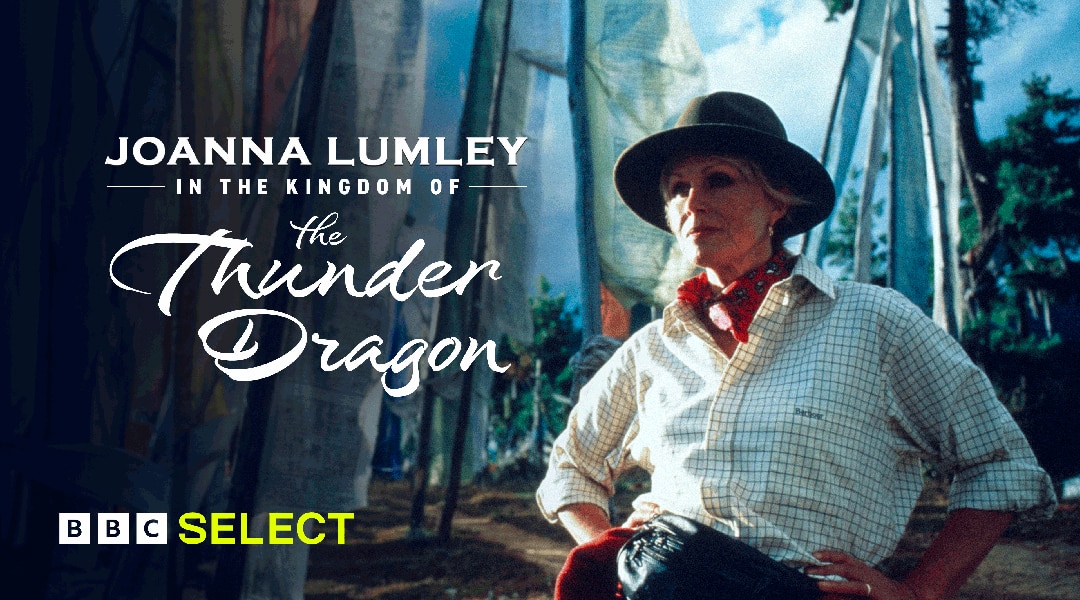
Bhutan, the beautiful land-locked nation in the Eastern Himalayas, has always been steeped in mystery.
In this revealing BBC travel documentary, Absolutely Fabulous star Joanna Lumley retraces the steps her grandparents took in the country 60 years before. Through her eyes, a world that challenges accepted ideas of wealth and happiness is explored.
But what family secrets will Joanna uncover?
Watch Joanna Lumley in the Kingdom of the Thunder Dragon and more acclaimed documentaries on BBC Select today. Restrictions apply*.
More documentaries you might like...
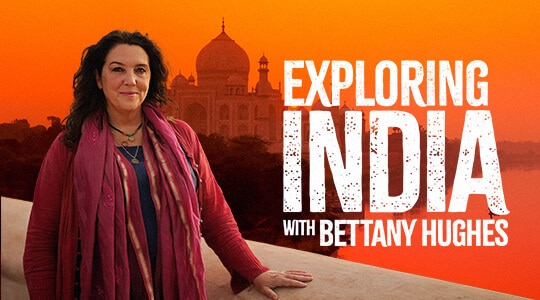
Exploring India with Bettany Hughes
Bettany Hughes guides viewers through her curated selection of India’`s finest treasures.

Men for Sale: Life of a Male Escort
Ben Zand takes a journey through the intriguing and secretive world of male escorts.
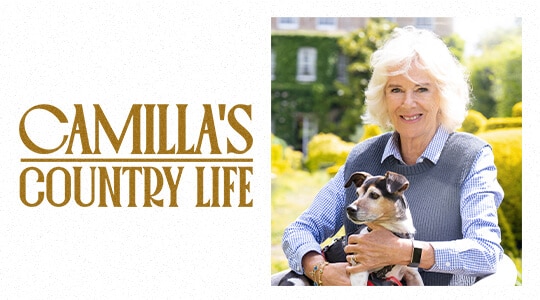
Camilla's Country Life
Following Her Royal Highness The Duchess of Cornwall as she guest edits Country Life.
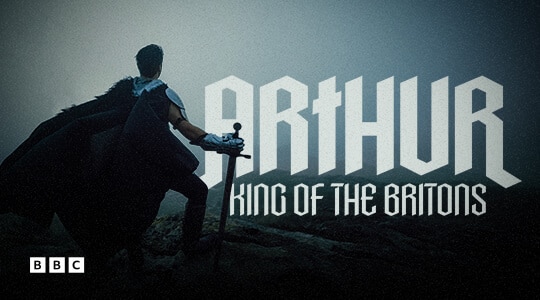
Arthur: King of the Britons
Why do so many myths and stories surround King Arthur? And did he even exist?

The Mormons Are Coming
Three young Mormons start a life-changing experience as missionaries in Britain.
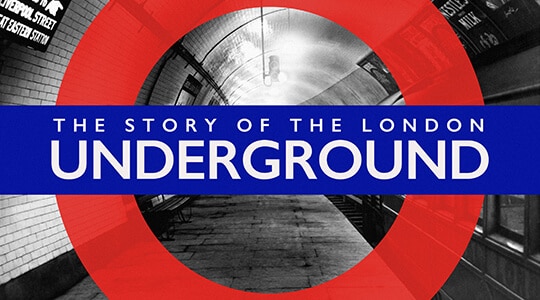
The Story Of The London Underground
The history of the London’s complex, confusing and vital underground train system.

The Story of Egypt
The rise and fall one of the world's greatest civilizations: the Ancient Egyptians.

Dave Harewood on Blackface: The Hidden History of Minstrelsy
Why was the abhorrent practice of Blackface minstrelsy so popular in America and Britain?

One Cup: A Thousand Stories
The history and culture of tea is explored and revealed on a scale never attempted before.
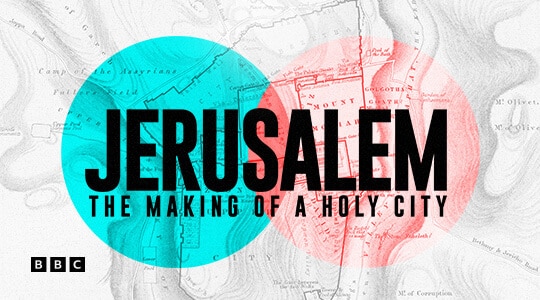
Jerusalem: The Making of a Holy City
The rise and fall and rise again of Jerusalem, one of the world’s most fascinating cities.
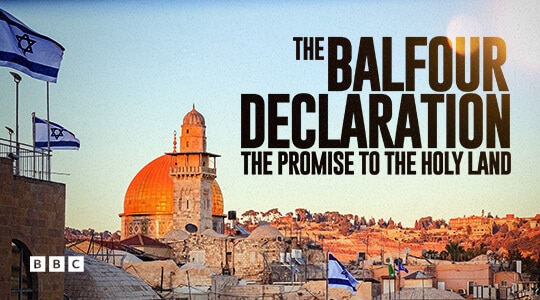
The Balfour Declaration: The Promise to the Holy Land
The legacy of the document that established a ‘home for Jewish people’ in Palestine.

Deck The Halls: The Luxury Christmas Decorators
Ever wish it could be Christmas every day? Get ready for some extreme festive decorating!
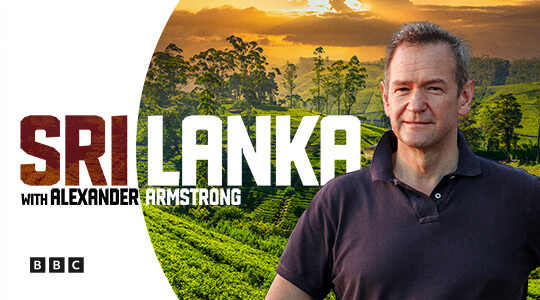
Sri Lanka with Alexander Armstrong
Comedian Alexander Armstrong heads to Sri Lanka to discover its fascinating culture.

The Hairy Bikers' Pubs That Built Britain
The Hairy Bikers unearth hundreds of years of history hidden in Britain's boozers.
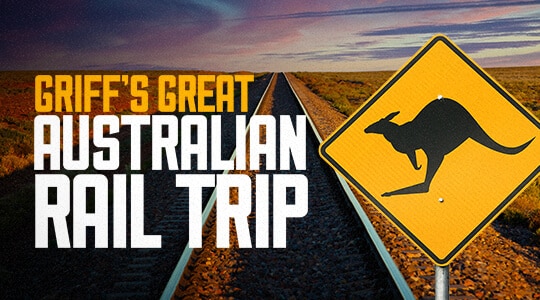
Griff's Great Australian Rail Trip
Comedian Griff Rhys Jones travels across Australia to find the heart of the nation.
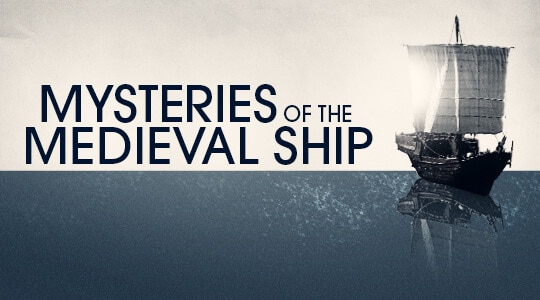
The Mysteries Of The Medieval Ship
A unique medieval ship is discovered in a Welsh river. But what secrets does it hold?

The Secret World Of Ice Cream
The ‘cold’ war fought by various global brands to dominate the UK ice cream scene.
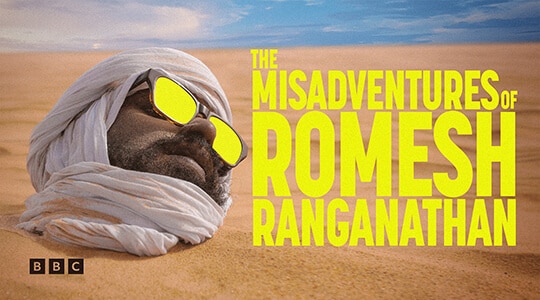
The Misadventures of Romesh Ranganathan
Comedian Romesh Ranganathan heads to some of the world's least likely tourist hotspots.

The Secret World Of Burgers
What goes into the perfect burger and how have they changed over the years?
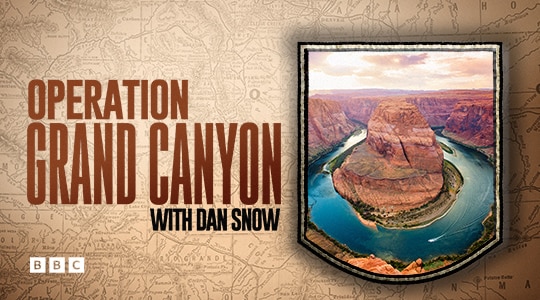
Operation Grand Canyon with Dan Snow
Historian Dan Snow undertakes a perilous journey down the dangerous Colorado River.

Who Sank The Titanic?
Who was responsible for the decisions and actions that led to the sinking of the Titanic?

Bettany Hughes' Grand Tour: From Paris to Rome
Bettany Hughes explores the culinary and cultural highlights of Paris, Rome and beyond.
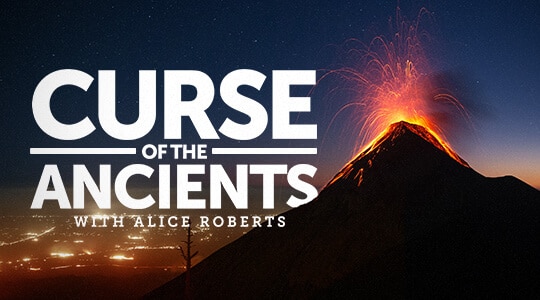
Curse of the Ancients with Alice Roberts
A look back at cataclysmic events in ancient history that still have relevance today

World's Most Luxurious
Prepare to be dazzled as the world’s finest homes, hotels and transportation are explored.
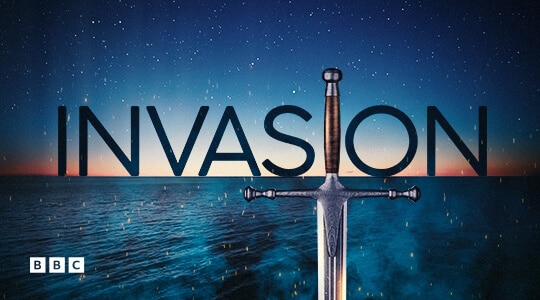
The remarkable history of 'invasion' in the British Isles spanning thousands of years.
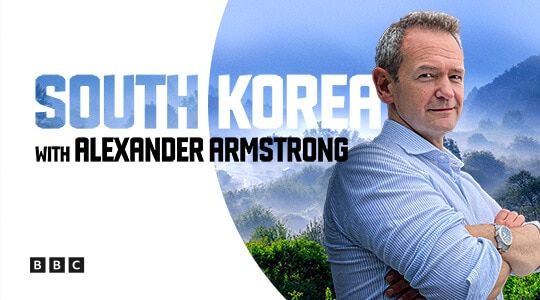
South Korea with Alexander Armstrong
Alexander Armstrong explores one of the most dynamic nations on earth: South Korea.
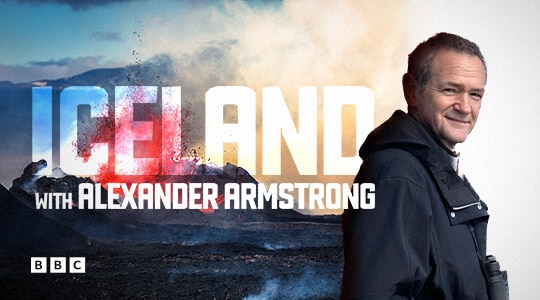
Iceland With Alexander Armstrong
Travel to the Land of Fire and Ice to learn more about its unique nature and culture.
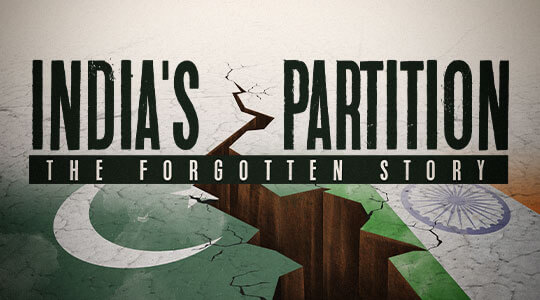
India's Partition: The Forgotten Story
In 1947, India was divided in two leading to violence and death. Why did it happen?
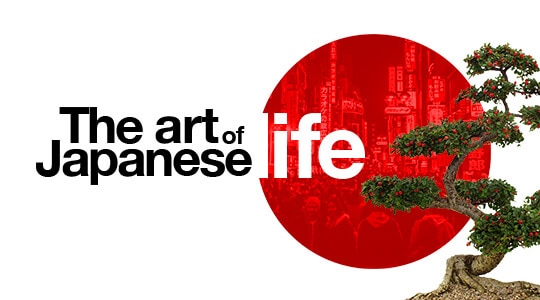
The Art Of Japanese Life
The mysterious and remarkable art and culture of Japan is explored and explained.

Renaissance Education: The Schooling Of Thomas More's Daughter
How the ideas that shaped Margaret More's education changed the cultural life of England.

Russia: 1000 Years Of History
An exploration of Russia's beginnings to its position as the biggest country in the world.
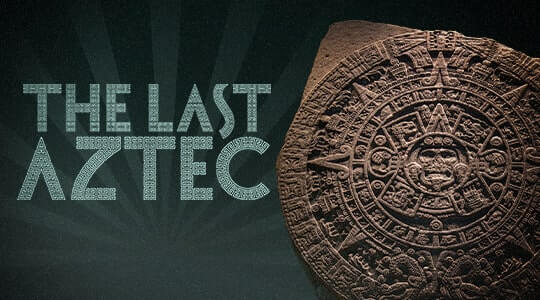
The Last Aztec
Author DBC Pierre takes a road trip across Mexico to seek the true soul of the Aztecs.
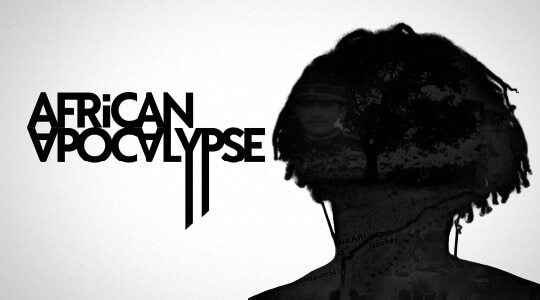
African Apocalypse
The atrocities committed by a rogue French officer in Africa are still being felt today.

Scotland: Rome's Final Frontier
The amazing story of how Scotland became the Roman Empire's toughest military challenge.

The World's Most Secret Hotels
Discover spectacular hidden gems in this travel show dedicated to the world’s most remote luxury hotels.
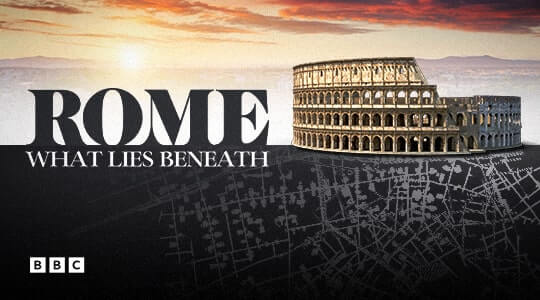
Rome: What Lies Beneath
Discover what the glory of the Roman Empire was really like using space-age technology
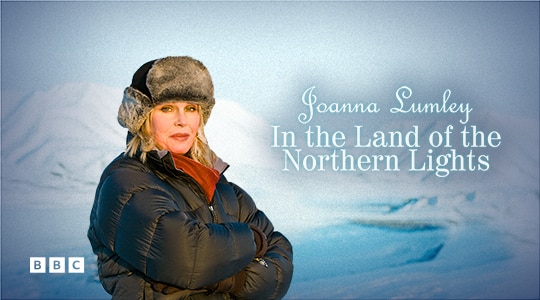
Joanna Lumley: In The Land of the Northern Lights
Can Joanna Lumley fulfill a life-long dream and track down the elusive Northern Lights?
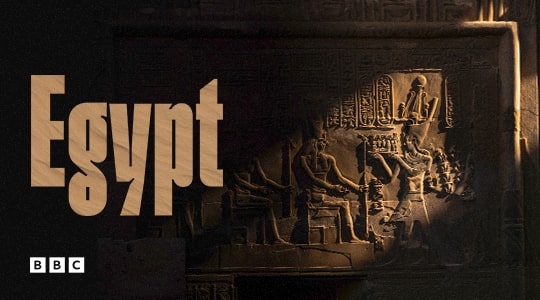
How three great explorers unlocked the mysteries of the ancient Egyptians.

100 Years of BBC News
How has BBC News and the world changed over 100 years?
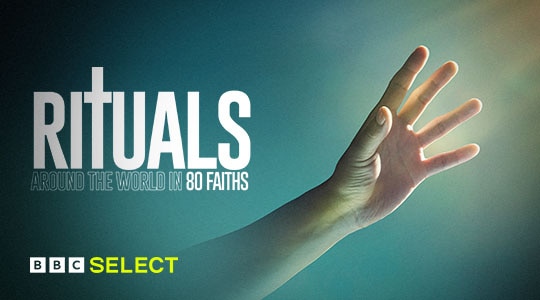
Some of the most incredible, intimate and grueling rituals on Earth are explored.

The Normans
How the extraordinary ambition of the Normans transformed the history of Europe.
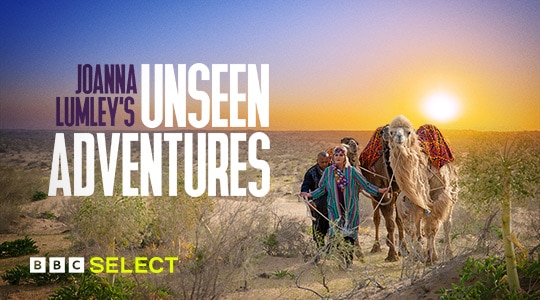
Joanna Lumley's Unseen Adventures
Ab Fab legend Joanna Lumley takes viewers behind the scenes of her epic travels.
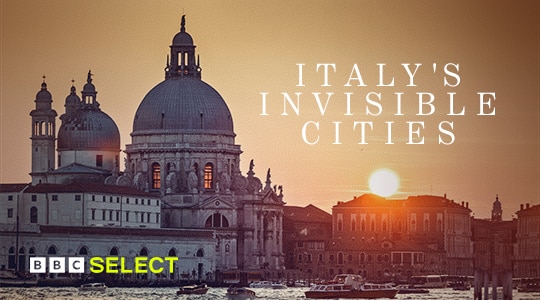
Italy's Invisible Cities
The hidden history of Venice, Naples and Florence
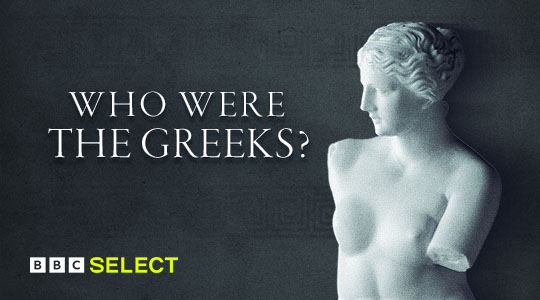
Who Were The Greeks?
Explore the brutal, brilliant and still influential Ancient Greeks
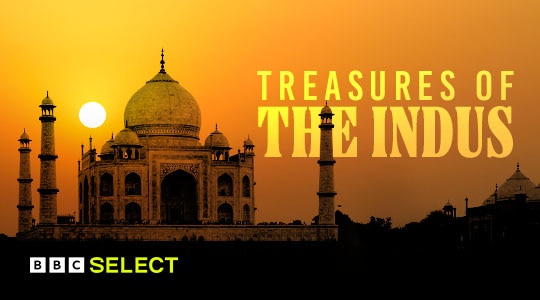
Treasures of the Indus
Ancient treasures are used to chart the fascinating history of India and Pakistan.
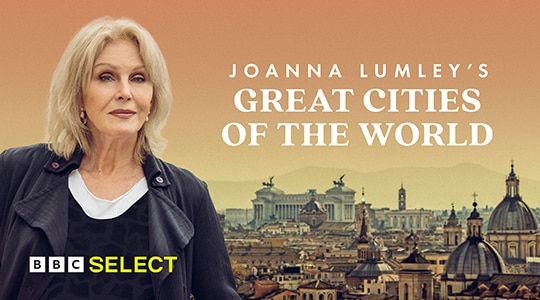
Joanna Lumley’s Great Cities of the World
Joanna Lumley explores Berlin, Paris and Rome
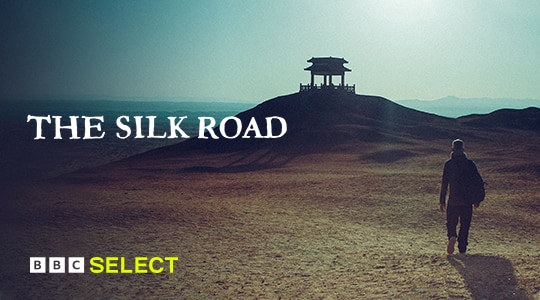
The Silk Road
The world's first superhighway that carried goods and ideas between Europe and China.
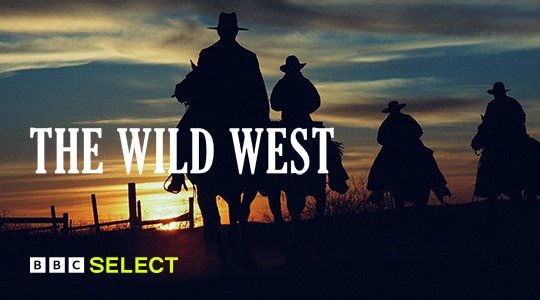
The Wild West
What is the truth behind the iconic figures of the Wild West – and what is pure myth?
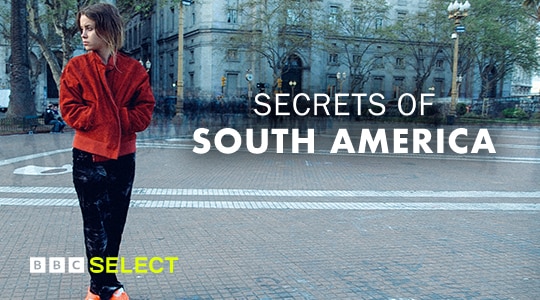
Secrets of South America
What do money, sex, status and power mean to the young people of South America?
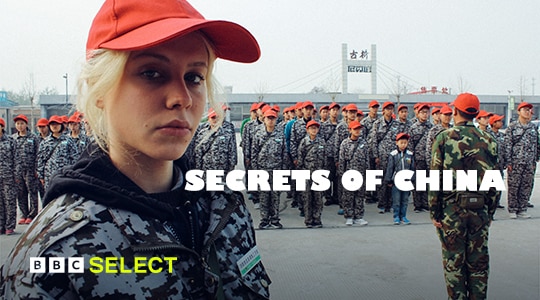
Secrets of China
Digging beneath the skin. What it’s really like to grow up in this secretive state?
BBC Select free trial
BBC Select is available on Amazon Prime Video Channels, the Apple TV app and The Roku Channel for only $5.99 a month. Start a 7-day free trial and watch a range of acclaimed documentaries from the BBC and beyond. Restrictions apply*.
Travel documentaries
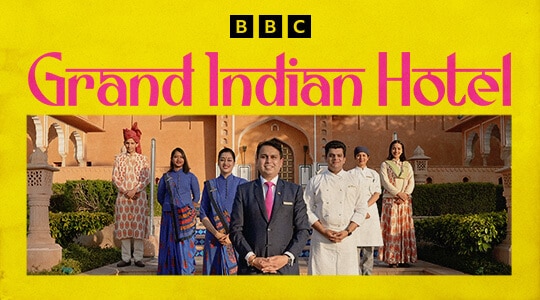
Grand Indian Hotel
Looking for luxury? Take an exclusive look inside some of India’s most opulent hotels.
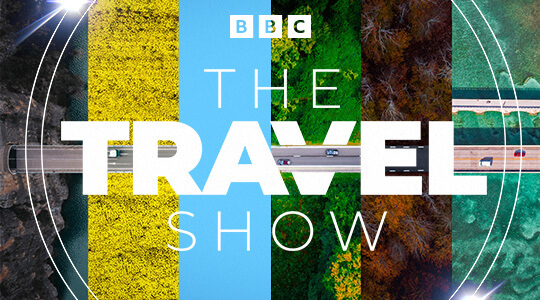
The Travel Show
Join the Travel Show team on a journey of discovery as they explore the globe.
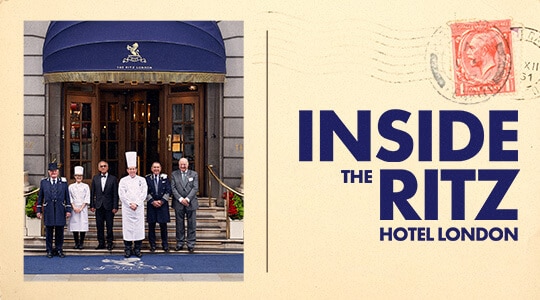
Inside The Ritz Hotel
Step inside one of the world’s most luxurious hotels where every whim is catered for.
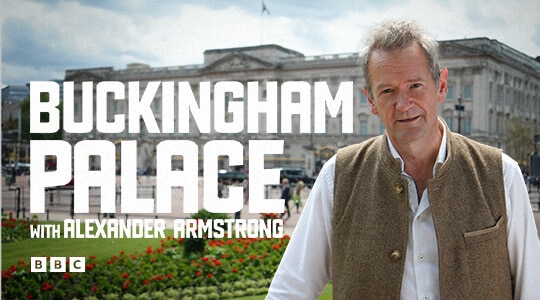
Buckingham Palace with Alexander Armstrong
Alexander Armstrong takes a privileged look behind the scenes of Buckingham Palace.
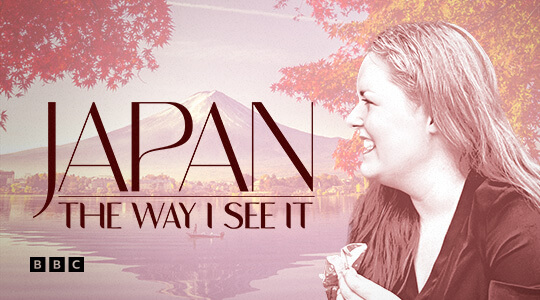
Japan: The Way I See It
Blind broadcaster Lucy Edwards travels to Japan to experience that unique country.
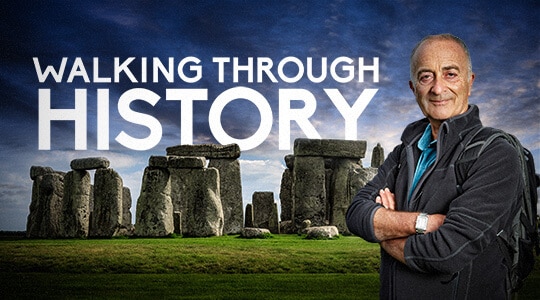
Walking Through History
Take a historic tour through some of the British Isles most impressive landscapes.
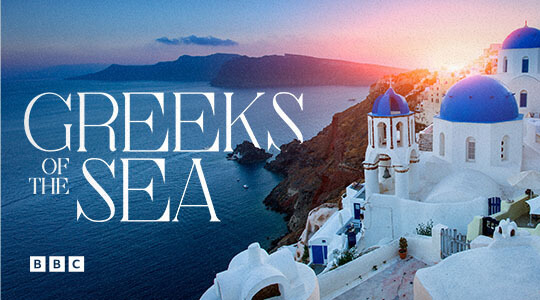
Greeks of the Sea
With incredible wildlife and amazing seafood, Greece’s seas are truly blessed by the gods.
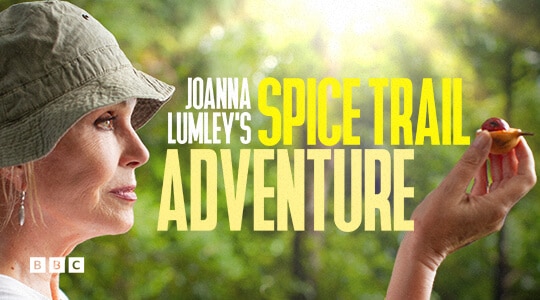

Joanna Lumely's Spice Trail Adventure
An epic, exotic quest through the world's greatest spice locations
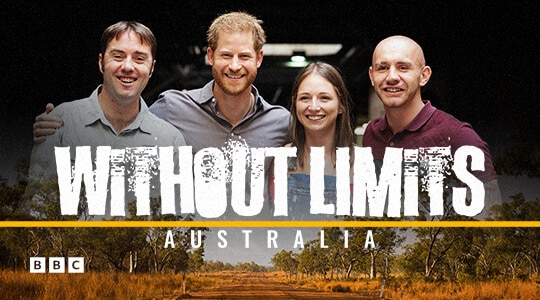
Without Limits: Australia
British and Australian veterans embark on a dramatic journey across Western Australia.
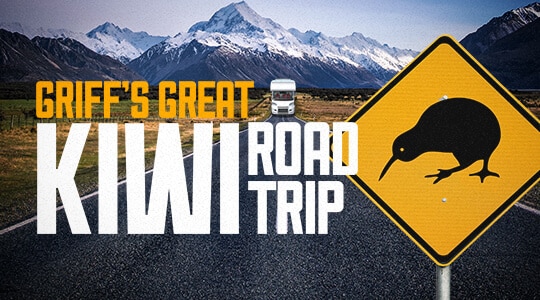
Griff's Great Kiwi Road Trip
Comedian Griff Rhys Jones sets out to encounter all the splendor of New Zealand.
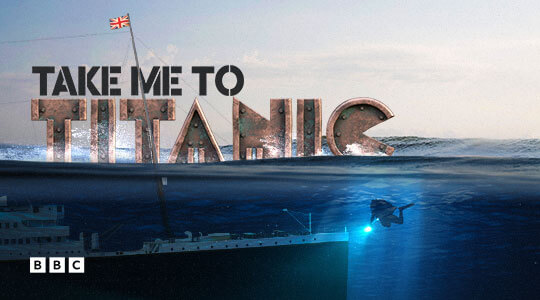
Take Me To Titanic
A journey to visit the world’s most famous shipwreck

Christmas in New York: Inside the Plaza
Tis the season to be swanky as the luxurious Plaza hotel gets ready for Christmas.
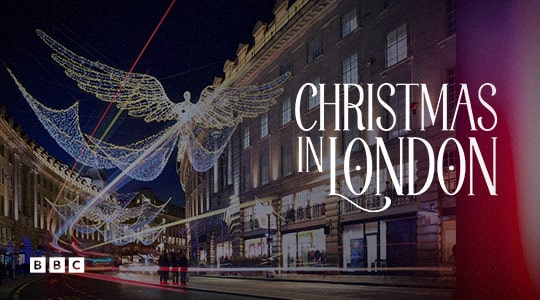
Christmas in London
Ever wondered what Christmas is like in one of the world's most glamorous capitals?

Secrets Of Royal Travel
The unseen luxury and decadence within the royal family’s planes and trains.
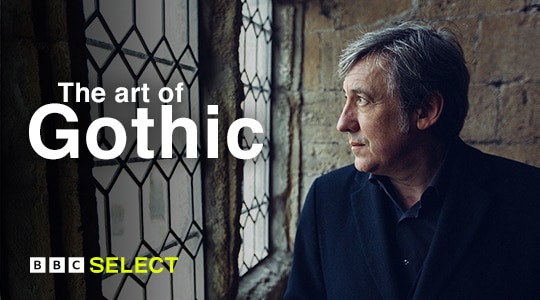
The Art of Gothic
Why were Brits in the 19th-century obsessed with art that was horrific, macabre and weird?
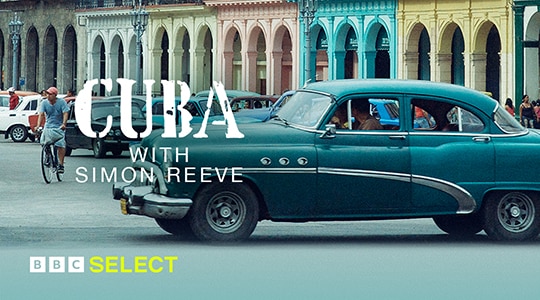
Cuba With Simon Reeve
Cubans reveal what life is like in the communist state as it flirts with capitalism.

Joanna Lumley’s Britain
Explore Great Britain in this charming travel series
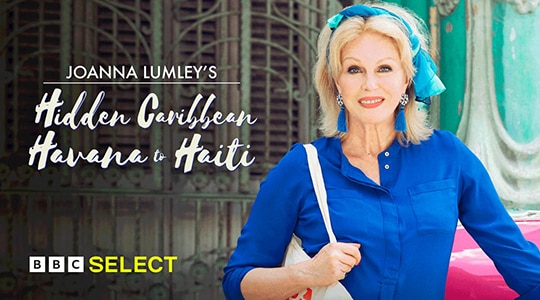
Joanna Lumley’s Hidden Caribbean: Havana to Haiti
Ab Fab superstar Joanna Lumley soaks up the sun, sights and sensations of Cuba and Haiti.
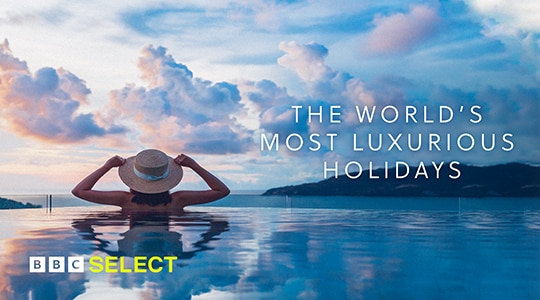
The World’s Most Luxurious Holidays
Need a getaway? Discover the most exclusive holiday hotspots where the mega-rich unwind.
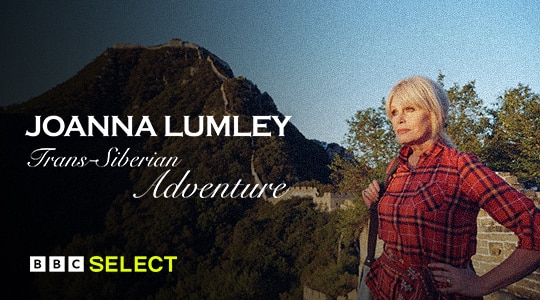
Joanna Lumley's Trans-Siberian Adventure
From China, Mongolia and Russia with love: Join Joanna Lumley’s Trans-Siberian Adventure
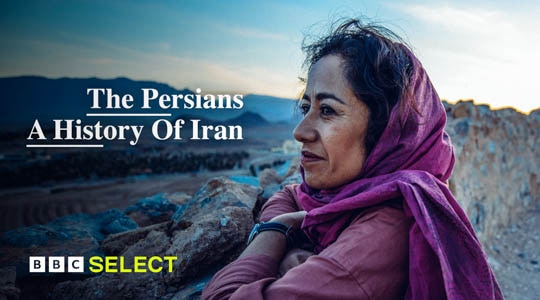
The Persians: A History of Iran
How was the world's first empire born and what led to its ultimate destruction?
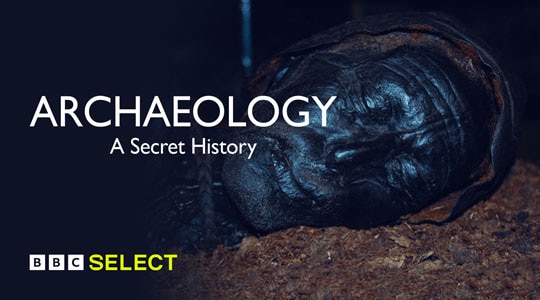
Archaeology: A Secret History
Better living through archeology. How can our past make sense of our present?

Amazing Hotels: Life Beyond the Lobby
How some of the most luxurious hotels on Earth function and create unforgettable memories.
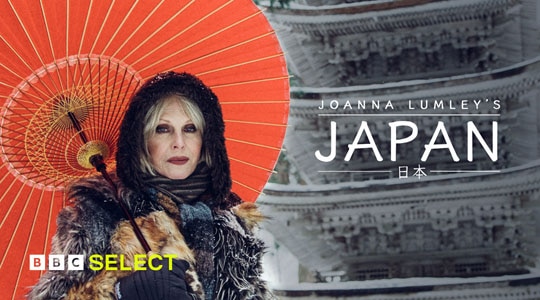
Joanna Lumley's Japan
A fantastic voyage around Japan with British national treasure Joanna Lumley.
BBC Select Email Newsletter
Sign up to be the first to know about new shows on BBC Select, the latest collection of documentaries and other content from BBC Studios we think you’ll enjoy.
Want to see more?
It just got (much) cheaper to visit Bhutan – start planning that dream trip

Aug 31, 2023 • 11 min read
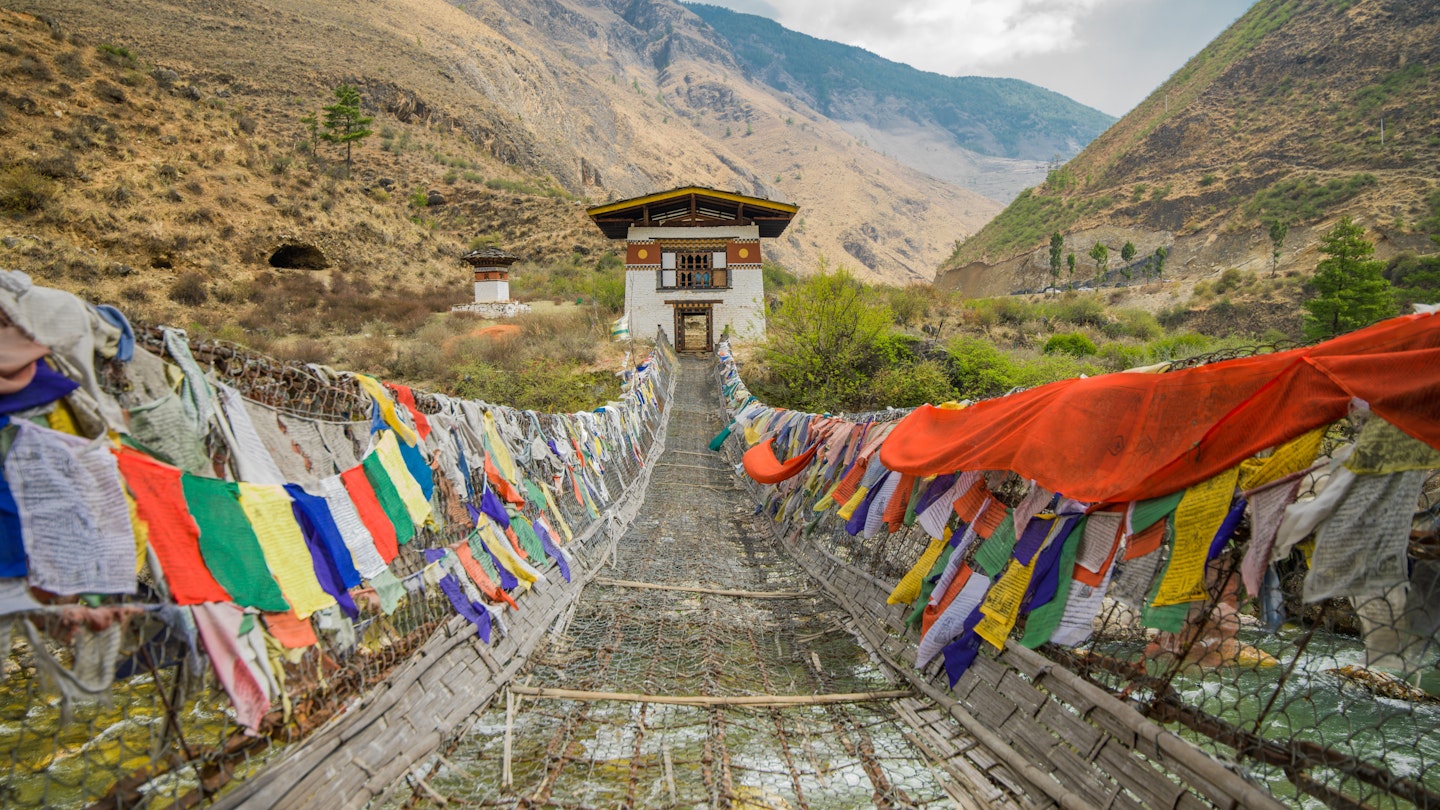
Bhutan is a destination only lightly touched by tourism © Mark Paulda/Getty Images
Since tentatively opening up to tourism in 1974, the Himalayan kingdom of Bhutan has earned a reputation as one of the most pristine – and expensive – places to visit on the planet.
Tight controls on tourism and high daily tourist fees have helped to preserve a traditional Buddhist culture that is rapidly vanishing from other parts of the Himalayas. And in 2022, those fees climbed even higher, as Bhutan opened its borders to travelers following the pandemic.
Now, almost a year after this sudden price hike, the Bhutanese government has announced another shake-up to the daily tourist fees – but this time, fees are coming down significantly. For travelers deterred from visiting Bhutan’s ancient fortress monasteries and immaculate mountain valleys by the high price tag, this is welcome news, but what exactly are the new rules, and how do they affect travelers?
If Bhutan has long been on your bucket list and you’re ready to go, here’s what you need to know about the new fees, including what you will be charged for and where the money ends up.
What was the old system for visiting Bhutan?
Until 2022, tourists to Bhutan were charged a daily tourist fee of $250 ($200 in the low season) for every day spent in the country. This might sound expensive, but the fee covered food, accommodation, transport, guide fees and most of the other essentials tourists needed for a once-in-a-lifetime trip. Also included in the daily charge was a $65 Sustainable Development Fee, funding far-reaching social programs in a nation famed for measuring progress in terms of Gross National Happiness rather than Gross National Product.
In September 2022, Bhutan reopened to un-quarantined tourists for the first time since the start of the pandemic – but the Sustainable Development Fee increased to $200 per day, with additional charges for accommodation, food, transport, entry to sights and guides. Lower fees applied for tourists from neighboring India , but for most other visitors, the cost of travel to Bhutan doubled from an already high baseline.
For some, Bhutan was no longer a once-in-a-lifetime destination tantalizingly within reach, but an unattainable dream, particularly with the soaring cost of flights and the post-COVID-19 cost-of-living crisis. For a while, it seemed that Bhutan’s unique experiences would be reserved for the high-flying elite; Himalaya fans with smaller budgets folded away their maps of alpine valleys and prayer-flag-draped monasteries and looked elsewhere for their dose of mountain magic.
In fact, the blow was soon softened by a series of discounts offered to travelers staying more than four nights in Bhutan, with additional days exempt from the daily fee once visitors reached a certain threshold. But as of September 2023, cheaper – if not exactly cheap – travel to Bhutan is back in the cards. Here are the changes, and what they mean for travelers dreaming of Bhutan's pure mountain air and timeless Buddhist architecture.
Getting the best out of your trip to Bhutan
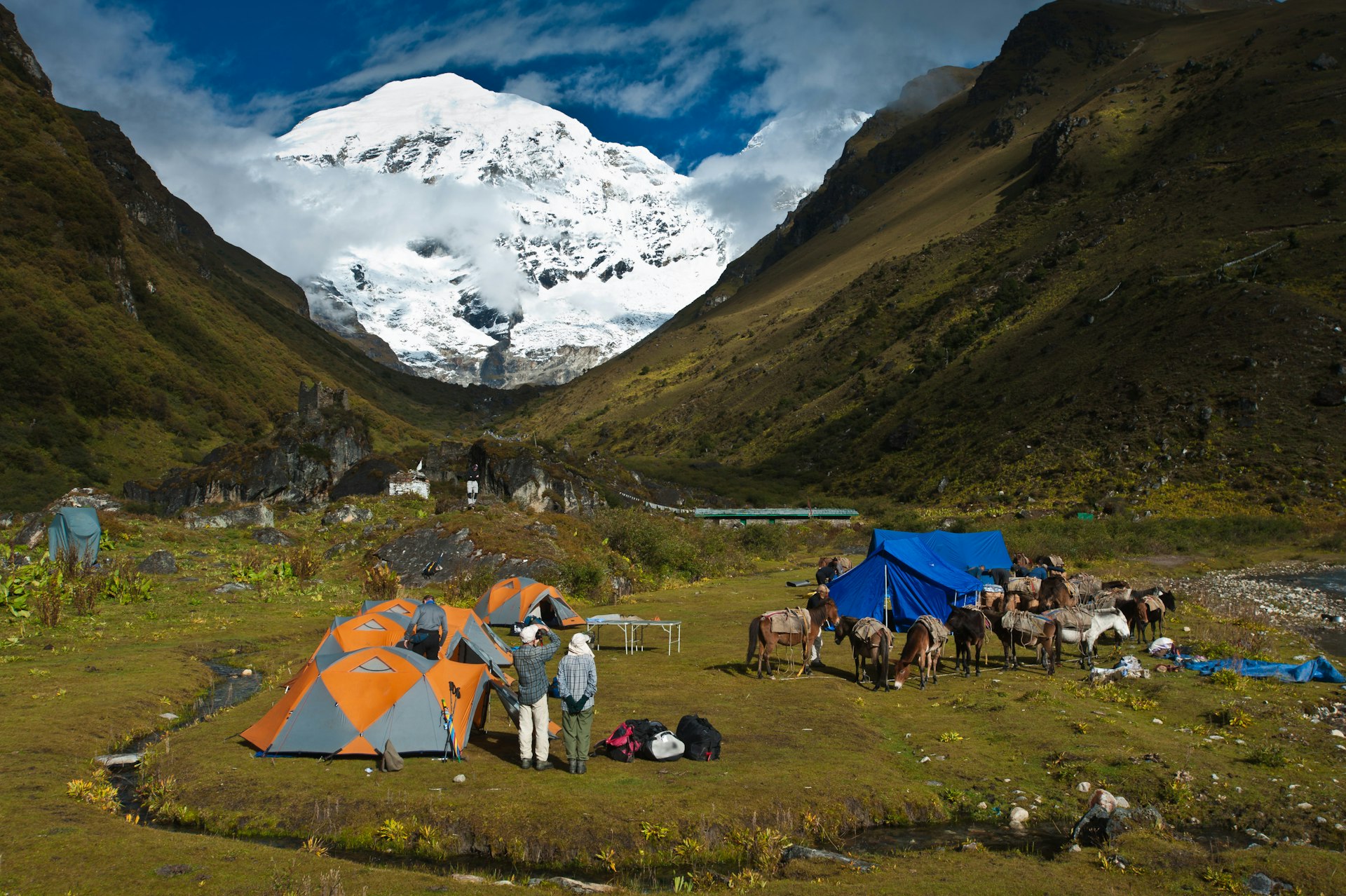
What is the new system starting in September 2023?
After increasing by 200% in 2022, the daily Sustainable Development Fee will be cut in half from September 1, 2023 to a more affordable US$100 per day. Children ages six to 12 will pay $50 per day, and there’s no fee for children age five or under. This is a significant price drop – but travelers will still have to budget for meals, transport, guide fees, entry charges at dzongs (fortress-monasteries) and museums, and hotels – which can cost anything from $40 per night for a budget hotel in the capital, Thimphu , to nearly $2000 per night for the lavish, palace-like Amankora Paro Lodge in Paro .
Then there are flights, with the trip from New York to Paro coming in at around $2000, transferring in either India or Nepal to a Bhutan-bound flight with Bhutan Airlines or Druk Air – the only airlines licensed to fly into the international airport at Paro. You should budget a minimum of $300 per day for a trip to Bhutan, and considerably more to stay in superior classes of hotel, in addition to the cost of your flights.
However, this high price tag gets you access to a destination only lightly touched by tourism. Only around 40,000 tourists visited Bhutan in the first six months after the country reopened following the pandemic, with more than half of these visitors coming from India. For comparison, Nepal received nearly 500,000 visitors over the same period, and India saw more than four million arrivals.
With the low visitor numbers, sights in Bhutan – such as the majestic dzongs in Paro, Thimphu and Punakha and the gravity-defying monastery at Taktshang – only become truly crowded when locals are gathering for one of the country’s colorful Buddhist festivals. While the influence of the modern world is creeping into Bhutan, particularly in Thimphu, your prevailing memories will be of peace, silence and clear mountain air scented by the aromatic resin of blue pines. For travelers seeking Shangri-La in real life, the experience is priceless.
Are there any changes for travelers from India, Bangladesh and Maldives?
Visitors from India, Bangladesh and Maldives are subject to different rules. Travelers from India, who make up 73% of all visitors to Bhutan, can visit with a special permit – available through the Bhutanese government’s visa portal – paying a low daily fee of ₹1200 (about $15). Bangladeshi and Maldivian citizens must apply for a visa, on top of the same special daily fee. No changes have been announced to this system.
In Bhutan, a historic Himalayan route opens to hikers for the first time in 60 years
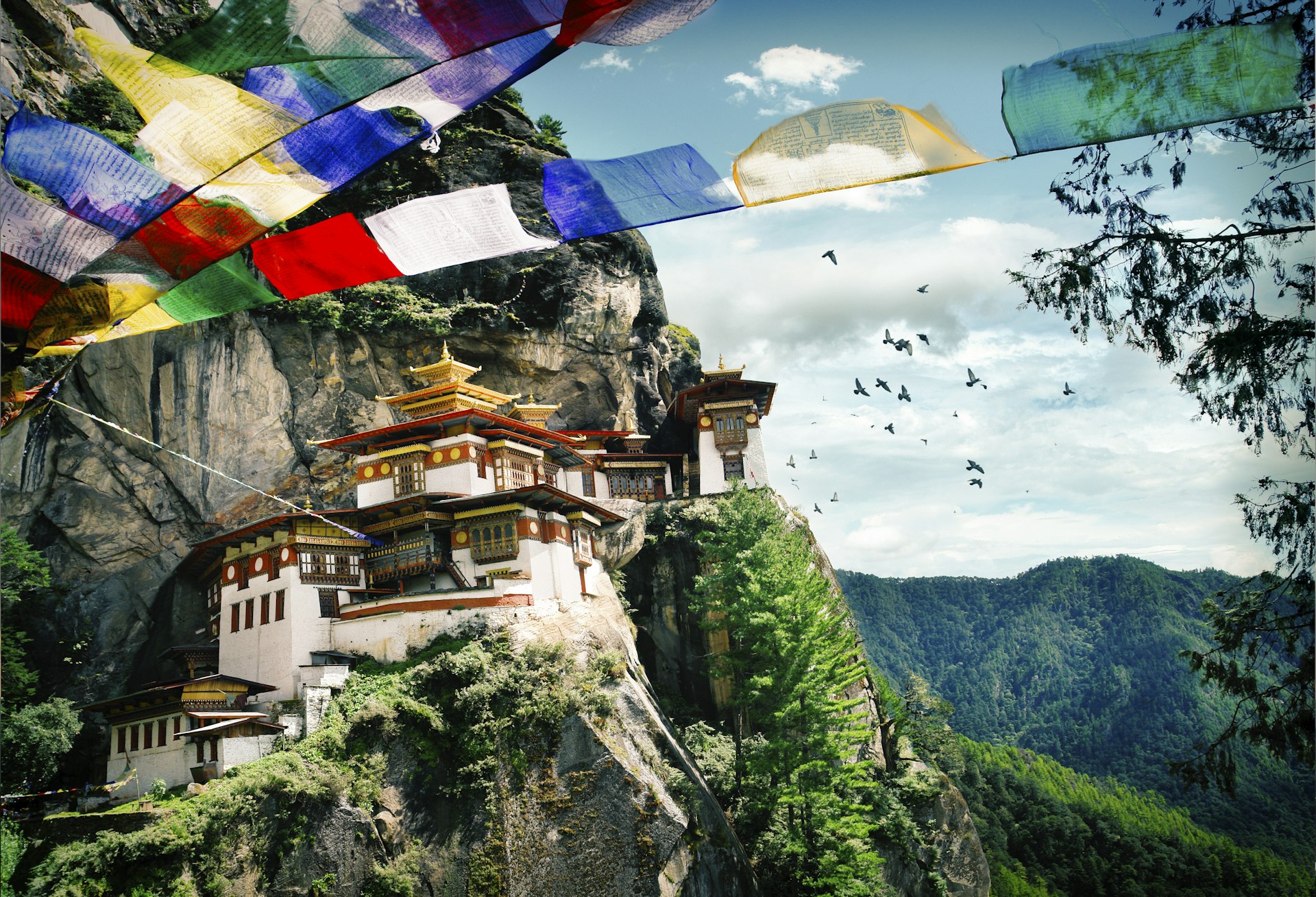
What if I want to go trekking?
With its lofty Himalayan valleys and remote monasteries, Bhutan is a spectacular trekking destination, but the daily Sustainable Development Fee still applies. The most practical way to trek is to make arrangements through a Bhutanese tour operator, who will provide guides, support staff, pack animals, tent accommodation and meals for the duration of your trek.
With a support team to transport your bags and put up your tent and a hot breakfast waiting for you when you wake up every morning, the experience is more like glamping than wild camping, and the trails are delightfully uncrowded – particularly if you attempt more ambitious routes such as the 28-day Trans-Bhutan Trail . You’ll also get to meet local people following a traditional way of life, far from the tourist bustle.
What about my visa?
Applying for a visa for Bhutan is a little different from applying for a visa for most other countries. Visas are not issued by embassies overseas but are stamped into your passport on arrival, on production of a pre-approval letter confirming you have paid the daily tourist fees and the $40 visa-processing fee. The easiest way to obtain this letter is to make arrangements through an approved Bhutanese tour operator; you can also apply online via the government's visa portal (you’ll also need mandatory travel insurance for the duration of your trip).
Be aware that you will have to pay the Sustainable Development Fee for every day of your stay at the same time as you apply for your visa. Many travelers feel more comfortable applying through a tour agency, rather than making a payment of hundreds or even thousands of dollars via an online form. Using an agency will also allow you to talk through your itinerary with an experienced local expert. It’s the best way to ensure that you get maximum value from the daily fee (for instance, you don't want to squander $100 days backtracking to places you have already visited).

Why has this decision been made now?
When the daily fee was increased in 2022, the government announced that funds raised would be used to offset the carbon footprint of tourism, reduce fossil-fuel dependency, improve carbon-neutral infrastructure and up-skill workers in Bhutan’s tourism sector, supporting Bhutan’s recovery from the pandemic.
However, in the first few months following the reopening, international visitor numbers fell markedly compared to before COVID-19, attributed to the new fee structure, worldwide inflation and economic uncertainty linked to the war in Ukraine. Nearly 60,000 people visited Bhutan from January to August 2023, compared to 315,600 travelers for the whole of 2019. The economic foundation of Bhutan’s “high value, low volume” tourism model no longer seemed quite so secure.
According to a government statement, the new fee reduction announced in 2023 reflects the “important role of the tourism sector in generating employment; earning foreign exchange; realizing the potential for spillover benefits for ancillary industries; and in boosting overall economic growth.”
Commenting on the change, Dorji Dhradhul, director general of the Department of Tourism Bhutan, said: “ Amid the global recovery from the COVID-19 pandemic, ongoing European conflicts, and economic challenges affecting key markets, we’ve attentively considered feedback from our guests, industry peers and global travel partners."
"Consequently, we’ve decided to temporarily reduce our Sustainable Development Fee (SDF) to rejuvenate our tourism industry. This will not only make our nation more accessible to potential visitors but will also ensure sustained funding for the numerous projects supported by the SDF."
It’s a valid stance for the government to take. In 2019, the Sustainable Development Fee contributed nearly $89 million to the Bhutanese economy. During the eight months from January to August 2023, the Sustainable Development Fee delivered a more modest $13.5 million into the national coffers.
Another issue was the lack of warning provided by the authorities when Bhutan reopened to tourism after the pandemic. The government announced the doubling of the daily fee just weeks before the borders opened in September 2022 – for a destination where tourists typically spend up to six months planning a trip.
The current reduction in the daily fee has also been announced on short notice, but the lower rate will apply until August 31, 2027, giving tourists some certainty when planning ahead for a trip to Bhutan.
Escaping Thimphu: where to go to find Bhutan’s hidden treasures

Where will my money go?
Bhutan’s unique tourism model has delivered significant benefits for the people of this remote Himalayan kingdom. On top of free healthcare and education, the Sustainable Development Fee has funded everything from conservation to carbon-neutral infrastructure and organic farming. These projects have contributed to Bhutan becoming the first carbon-negative country on earth – actually absorbing more carbon dioxide than it produces.
What does sustainable development look like on the ground? With tourism reducing the pressure on agriculture to sustain the economy, Bhutan has managed to keep 71% of its territory under forest cover, compared to just 25% in Nepal and 11% in Bangladesh . Some 95% of Bhutan’s electricity is produced using hydropower, and almost 100% of the population has access to electricity and clean water.
In exchange for opening their mountain home to high-value, low-impact tourism, the Bhutanese have achieved a high standard of living compared to their neighbors. Bhutan spends nearly 40% more than Nepal on education, with half the unemployment rate and half as many people living under the poverty line. And the adult literacy rate is growing at 10% per year – not bad for a country where 61% of people live in remote mountain villages.
Bhutan is also famous for its Gross National Happiness – an innovative model for assessing the successes and achievements of Bhutan’s part-monarchy, part-clergy and part-elected government. Using such measures as job satisfaction, sense of community, psychological well-being and religious karma, Bhutan is rated as the happiest country in the world.
Know your gompas: a Lonely Planet guide to Tibetan Buddhist monasteries
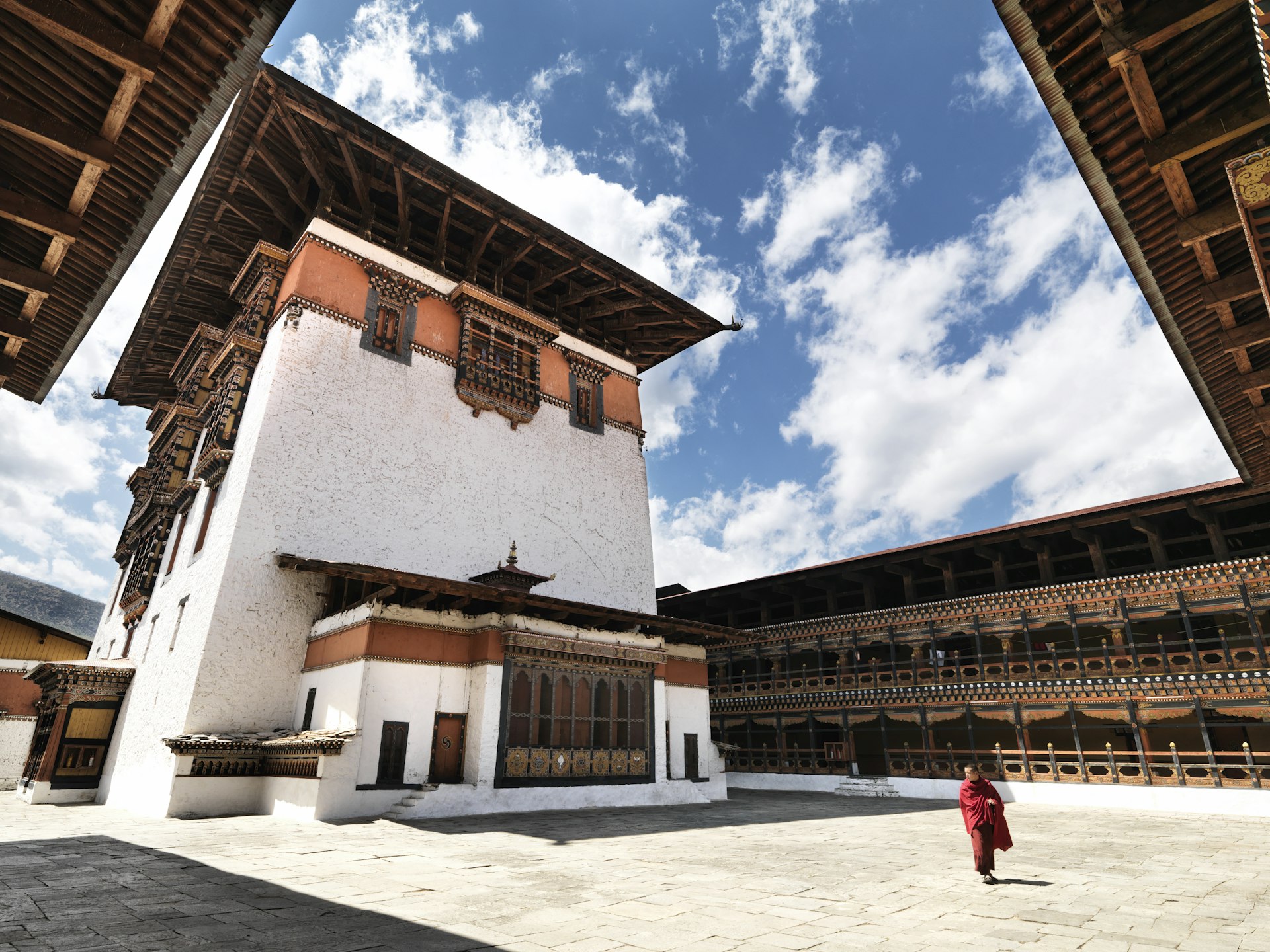
So is Bhutan still worth visiting?
Of course! While visiting Bhutan will always be an expensive option, the lower daily fee makes travel here more affordable – just not quite as affordable as it was before the pandemic. In truth, Bhutan was always a plan-ahead-and-save-up kind of destination, and with the lower Sustainable Development Fee fixed until 2027, travelers have a clear target to aim for over the next four years.
Looking at things objectively, tourist fees are increasingly the future of travel. Barcelona has had a tourist tax since 2012, Thailand imposed a $9 tourist tax in 2022, Manchester introduced a daily tourist charge in 2023, and Venice and Valencia are poised to levy new tourist charges during the 2023–24 season. The primary difference in Bhutan is that you need slightly deeper pockets.
If the lower daily fee succeeds in luring more people to Bhutan, visitor numbers will still be small by international standards, and the government will have more funds for worthy social and environmental initiatives such as new hydropower projects and the electrification of public transport. In the future, that famously clean mountain air may become even cleaner and more keenly fragranced by the scent of glacial meltwater and blue pines.
This article was first published Aug 12, 2022 and updated Aug 31, 2023.
Explore related stories
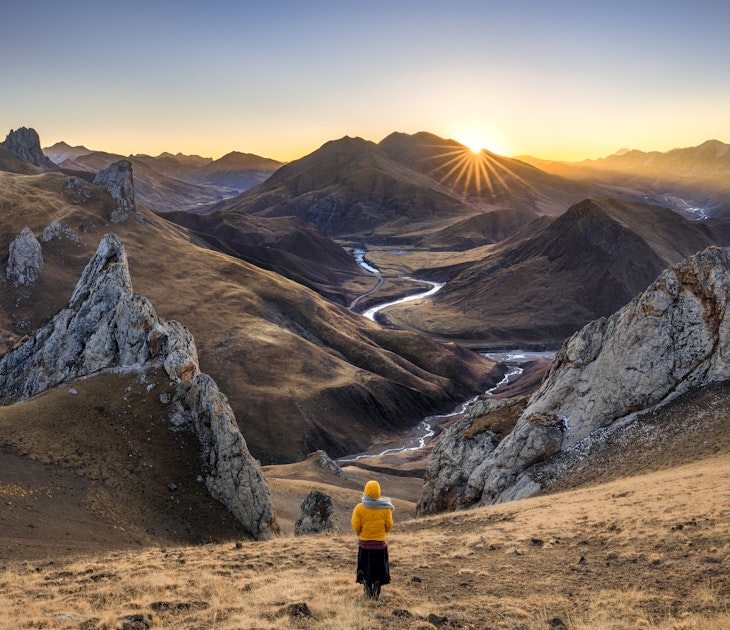
Jan 5, 2024 • 20 min read
As the new year begins, here are 24 of the world’s most life-affirming journeys to consider for nurturing your path to self-discovery.

May 17, 2024 • 14 min read
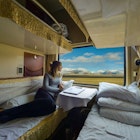
May 9, 2024 • 6 min read
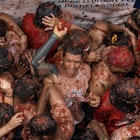
May 3, 2024 • 6 min read
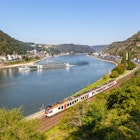
May 3, 2024 • 5 min read
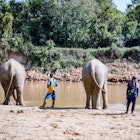
Apr 25, 2024 • 5 min read
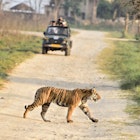
Apr 16, 2024 • 13 min read
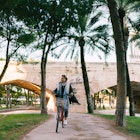
Apr 16, 2024 • 7 min read
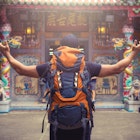
Apr 8, 2024 • 6 min read

Apr 3, 2024 • 15 min read
More From Forbes
5 reasons to visit bhutan, one of travel’s hottest destinations.
- Share to Facebook
- Share to Twitter
- Share to Linkedin
The big cultural attractions in Bhutan are Buddhist temples, stupas (shrines) and Dzongs, monastic ... [+] fortresses like Punakha Dzong, shown here.
2024 will mark the 50 th anniversary of the opening of Bhutan to foreign travelers, and in that relatively short time it has been one of the least visited great places in the world. Bhutan has always been a true “Bucket List” destination for select niches of travelers, including romantics, nature lovers, the spiritually inclined, and that enviable group who has been “everywhere else.” But after a total pandemic shutdown, Bhutan has gone prime time, re-emerging with new hotels, activities, travel options and revamped tourism policies that make the logistically challenging destination easier to visit than ever before.
In an increasingly ubiquitous and globalized world, amidst artificial cities full of the same stores and restaurants found all over the planet, uniqueness and authenticity stand out in travel more than ever, and many things make this small country (the size of Switzerland, in turn the size of West Virginia) truly unique. It’s the world’s only Buddhist monarchy, the only country entirely contained within the Himalayas and unlike many newcomers to the sustainability trend, has a lengthy green history that has made it the first carbon-neutral country on earth. Bhutan famously measures its domestic success with a Gross National Happiness index and is one of the happiest country on earth. It has the highest unclimbed peaks in the world, along with tropical climate valleys producing everything from coconuts to mangoes to oranges. It is legendarily home to the Yeti, or Abominable Snowman, but for sure it is home to a shocking array of wildlife, such as Bengal tigers, leopards, elephants, red panda, monkeys, black bears, and the national animal, the rare takin, a sort of sheep or goat meets musk ox.
Bengal Tigers? Yep, Bhutan has those too. AFP PHOTO/MANAN VATSYAYANA . (Photo credit should ... [+] read Manan Vatsyayana/AFP via Getty Images)
Below the high snowcapped peaks, it is warm, lush and very green, and some think Bhutan was the inspiration for the novel and film Shangri La, as it is a true hidden Himalayan paradise.
There are many good reasons to visit Bhutan in the near future, but here are my top five.
No matter where you come from, you'll arrive in Bhutan at the Paro International Airport - and ... [+] getting there is easier than ever. GETTY
Best High-Yield Savings Accounts Of September 2023
Best 5% interest savings accounts of september 2023.
1. It Just Got Easier (and Cheaper) : Until recently, American tourists were required to go through special tour operators and book entire pre-paid itineraries, with a minimum daily spend, in order to get a visa (in turn, you cannot buy plane tickets into Bhutan without a visa). There are still a lot of rules, such as that you need to be with a guide almost the entire time, but the booking process has become more transparent and simplified, and you can go directly through hotels or a growing number of North American or Bhutanese tour operators. The daily spending requirement is gone, and just this month (September 2023), the daily Sustainable Development Fee (SDF) was cut in half for the next four years, immediately saving most visitors a hundred bucks a day per person, or about two thousand bucks on the typical couples trip. The dollar is also very strong against the local currency, the Bhutanese Ngultrum (BTN), worth 10-20% more right now versus the last pre-pandemic year, 2019.
Despite the incredibly low cost of living (you can buy a beer for less than 75 cents), the international brand luxury hotels charge just as much here as they would in the Caribbean or elsewhere, over a thousand a night. For this reason, Bhutan is definitely not known as a budget destination, but if you opt for 3-star lodging, you can do a trip for as little as $300 a day, including lodging, a full-time guide, driver, meals - and even the $100 per day SDF. There are few desirable travel destinations where that is possible, and in most popular tourism spots, just the hotel will eat that entire budget. The new tourism rules also allow for homestays and farmstays, instead of previous requirements that dollar paying guests use 3-Star or higher hotels, increasing the possibilities for lower cost travel.
But most Americans who visit are going the luxury route, and for that there are tons of great options, including several brand-new ones. The Bhutan Tourism board just joined the Virtuoso luxury travel consortium , connecting them with thousands of the world’s best travel advisors (travel agents). That includes most major US based high-end travel agencies, as well as most of the luxury hotels within Bhutan, giving those advisors access to extra benefits when booking their clients that travelers won’t get on their own. Simply calling your travel agent is the easiest way to do Bhutan ( read more about why for the best travel you should always use a travel agent - even when you don’t think you need one - here ).
From the moment you arrive in Bhutan you'll know you are someplace special - even baggage claim is ... [+] unique.
You can also book your trip through the global luxury hotel operators in Bhutan ( Aman Resorts , COMO resorts , Six Senses and most recently, &Beyond ). But in addition, many top tour operators such as Micato Safaris (also a Virtuoso member and the only record 10-time winner of Travel + Leisure’s World’s Best award) and Smithsonian Journeys are offering bespoke trips to Bhutan (for the former, in conjunction with neighboring India, where they are the standout tour operator).
Scheduled group tours, which are turnkey in terms of planning and often more affordable, even at the luxury level, are also available from some of the best escorted travel providers, such as Abercrombie & Kent and National Geographic Expeditions . For many of the international hotel brands, the Bhutan strategy has been to open multiple small lodges in different parts of the country and sell them in combination as circuits or journeys. But this locks you into a single brand, and since you have to use a guide and driver regardless, personally I think it is better to mix and match and include properties you might otherwise overlook, like the spectacular Gangtey Lodge , Thimphu Pemako or Zhiwa Ling , arguably the most authentic upscale Bhutanese lodging experience you can have here.
The scheduled group tours tend to cherry pick the best lodges in each region, which is ideal, and the biggest growth in this sector has been among active travel specialty companies…
Bhutan is flush with outdoor adventures, and many hikes and bike rides cross its network of ... [+] suspension bridges - this is the nation's second longest.
2. Active Travel: Bhutan is a wonderland of hiking, trekking, mountain biking, rafting, birding, fishing, horseback riding and increasingly, wildlife viewing. The country’s single best-known attraction - by far - is the iconic Tiger’s Nest monastery, inaccessible by road and requiring a 4–6-hour roundtrip hike (moderate difficulty but at altitude). While just about everyone who is physically capable visits this highlight on any kind of Bhutan tour, the concept sets the tone for active travel itineraries, which include it and many other hikes.
Just last fall, the King officially opened the new Trans-Bhutan Trail, a long-distance hiking (and mountain biking) route (like Bhutan’s Appalachian Trail) running the entire length of the country, border to border ( read more about this big debut here ). While only a small number of hardened trekkers will visit to do the whole thing, it is broken into regional segments, and these are incorporated on just about every itinerary from top active travel tour operators. In another twist on outdoor fun, the national sport of Bhutan is archery, and many of the luxury resorts offer ranges and the chance to try it with instruction and traditional handmade bamboo bows and arrows, great fun.
A hiker passes one of 18 bridges that were rebuilt to complete the Trans Bhutan Trail.
The best active travel outfitters have long had custom trips to Bhutan, but scheduled group trips, again more affordable (relatively), are now proliferating. Butterfield & Robinson , the company that invented the entire category of guided luxury active travel half a century ago, and the gold standard, has been doing custom Bhutan for years but very recently added its only scheduled group offering, a 12-day hiking trip . Backroads , the biggest luxury active travel specialist, and one I have traveled with happily several times, has scheduled group options including multi-sport and a hiking/biking hybrid, along with bespoke itineraries. Mountain Travel Sobek and Geographic Expeditions are two other long established and well-respected active travel operators with years of experience in Bhutan, offering some more active trekking options.
The new luxury &Beyond Punakha River Lodge specializes in hikes and outdoor adventures with gourmet ... [+] picnics, like breakfast at this temple that can only be recahed by foot.
3. New Hotels : Not surprisingly, the upward trending of Bhutan tourism brings with it new players eager to get in on the luxury-oriented space. Just this month (September 2023), two all new and very notable hotels debuted. andBeyond ( &Beyond) is a very well-known and respected luxury African safari lodge operator, with multiple lodges across East and Southern Africa, as well as a recent expansion into Chile. They just opened &Beyond Punakha River Lodge , in one of the fairest climate valley regions of Bhutan, an epicenter of hiking, biking and many other adventures, and I was lucky enough to be one of the very first guests just days after soft opening. It’s fabulous, and I write about it in much more detail here . I’d previously been to the award-winning &Beyond Sossusvlei in Namibia, which is fantastic, so I had very high expectations - the kind that are hard to meet - and still came away quite impressed. More than its many well-known luxury brand competitors, this property really focuses on the active outdoors and Bhutan beyond the normal cultural/temple circuit. It has just two villas and six deluxe safari-style “tented” suites (with soaking tubs, walk in showers, a/c and much more), great food with lots of local Bhutanese touches, great staff, and an enviable location.
Momos are one of the Bhutanese local delicacies you can enjoy at the new &Beyond Punakha River Lodge
Even newer (it opened a week later) is Pemako Punakha , easily the fanciest Bhutanese-owned property in the country. The parent company owns an airline, cellular carrier, several hotels and much more, including the top hotel in the capital city of Thimphu, Pemako Thimphu (previously a Taj Hotel, recently rebranded). This new build is big by Bhutan “boutique” standards, with about two dozen tented villas, each with its own butler and private pool. Even at the high-end luxury level many of the lodges here are too small to offer things like fitness centers or multiple dining and drinking outlets, but Pemako Punakha has all of that and is sure to be one of the world’s more talked about new hotels.
The famed Tiger's Nest monastery is the most photographed site in Bhutan - it's easy to see why.
4. Buddhist Temples: As mentioned above, the Tiger’s Nest monastery is so synonymous with Bhutan it is what you see on every travel brochure, kicking off every travel article, at the top of all the web pages linked in this piece, and if you just Google images of Bhutan it’s mostly what you get. All of this fame is well deserved, it’s a stunner, but there are a lot - I mean a lot - of other monasteries, Dzongs (Monastic fortresses), stupas and one of the largest Buddha statues in the world at 170 feet (filled with 125,000 smaller ones). Many of these are more remote and can be combined with hikes or bike rides, but the most photogenic are accessible by vehicle. Even if you have no interest in Buddhism, the architecture and art, inside and out, is a must-see and one Bhutan’s major attractions, just like the Sistine Chapel in Rome or the Duomo in Florence.
For fly fishing junkies, the rare Golden Mahseer (Tor putitora) is one of the sport's Holy Grails, ... [+] and Bhutan, which has plenty, just opened angling to visitors this year.
5. Fly Fishing : OK, this is a bit of a wildcard, but it’s new and of ultra-high quality. Also, passionate anglers are people who already travel to remote spots to access the best waters, and this is one of those. The two main objectives are large brown trout (plus snow trout) and the immense and coveted Golden mahseer (plus Chocolate Mahseer), both on very uncrowded rivers. The latter is legendary, sort of like tarpon are to salt water, often topping 50 pounds and among the strongest fighting freshwater fish in the world, but they have dwindled in the other Asian nations where they are typically sought. Bhutan has tons of them, and the new regulations just allowed the first licensed trip this March (2023) with an outfitter called Himalayan Flyfishing Adventures . They offer both one-day outings and multi-day dedicated fishing vacations. Many of the better lodges, such as the new &Beyond, can also arrange fishing, but it needs to be planned in advance as there are a lot of license rules and very specific seasonality and limits on which rivers you can fish.
- Editorial Standards
- Reprints & Permissions
Join The Conversation
One Community. Many Voices. Create a free account to share your thoughts.
Forbes Community Guidelines
Our community is about connecting people through open and thoughtful conversations. We want our readers to share their views and exchange ideas and facts in a safe space.
In order to do so, please follow the posting rules in our site's Terms of Service. We've summarized some of those key rules below. Simply put, keep it civil.
Your post will be rejected if we notice that it seems to contain:
- False or intentionally out-of-context or misleading information
- Insults, profanity, incoherent, obscene or inflammatory language or threats of any kind
- Attacks on the identity of other commenters or the article's author
- Content that otherwise violates our site's terms.
User accounts will be blocked if we notice or believe that users are engaged in:
- Continuous attempts to re-post comments that have been previously moderated/rejected
- Racist, sexist, homophobic or other discriminatory comments
- Attempts or tactics that put the site security at risk
- Actions that otherwise violate our site's terms.
So, how can you be a power user?
- Stay on topic and share your insights
- Feel free to be clear and thoughtful to get your point across
- ‘Like’ or ‘Dislike’ to show your point of view.
- Protect your community.
- Use the report tool to alert us when someone breaks the rules.
Thanks for reading our community guidelines. Please read the full list of posting rules found in our site's Terms of Service.
Bhutan Tours & Holidays

Bhutan measures its success by Gross National Happiness and by the end of your Intrepid tour, you’ll have contributed more than your fair share of smiles to the cause.
This tiny Himalayan kingdom does things differently. Having only been open to visitors for 45 years, Bhutan puts its environment, culture and wellbeing ahead of economics. This place absorbs more carbon than it creates and a Bhutan tour is perfect for trekkers, nature-lovers and Buddhist pilgrims. From the jaw-dropping Tiger’s Nest to the prayer halls of Gangte Goemba, you’ll experience moments – and people – that make happiness seem like the norm, not a pursuit.
Our Bhutan trips
Let's create an exclusive trip for your group.
Bhutan tour reviews
Filter by rating
Premium Bhutan
Bhutan Discovered
Articles of Bhutan
8 offbeat trips to escape the crowds in 2023
9 ways to get to know a place through multi-active adventures in 2023
According to Lonely Planet, Bhutan is the top country to visit in 2020: here’s why we agree
10 destinations that want you to be a better traveller
5 lessons I learned from visiting Bhutan with Intrepid
9 alternative travel spots for 2018
10 epic destinations to make you feel small
10 questions with the first documented woman to travel to every country
Bhutan at a glance
Capital city.
Thimphu (population approximately 115,000)
Bhutanese ngultrum (BTN)
(GMT+06:00) Astana, Dhaka
CALLING CODE
Electricity.
Type D (Old British 3-pin) Type F (German 2-pin, side clip earth) Type G (Irish/British 3-pin) Type M (see D)
Learn more about Bhutan
Culture and customs.
If travellers can tear their eyes away from the backdrop of the mighty Himalaya, they’ll discover a rich, remarkable culture in Bhutan that is quickly modernising yet truly anchored in tradition.
Since opening up to travellers in 1974, Bhutan has seen visitor numbers rise from just a couple of hundred to upwards of 200,000. The appeal is obvious: pristine alpine landscapes, magnificent Buddhist architecture and an air of mystery that pulls travellers in, not to mention the much-discussed Gross National Happiness used to measure national wellbeing, which is prioritised over GDP.
Bhutan is the only country in the world to be carbon negative. Since 2007 the country has been run by a democratic government, with three separate parties having won the three national elections since. Approximately 75 per cent of the population are Buddhist and these religious values are used to guide government policy along with prioritising sustainability and cultural preservation.
In society, the Bhutanese follow ‘driglam namzha’, a traditional etiquette supporting the respect for authority, devotion to family and a dedication to civic duty. The flag, which was adopted in 1965, features the country’s emblem of the Thunder Dragon on a backdrop of golden yellow and orange. The yellow represents the king and his secular power, while the orange represents Buddhism. The dragon holds jewels in each of his claws, representing the wealth of the nation.
And it’s the word ‘wealth’ that perhaps describes Bhutan best. A wealth of tradition, of culture, of history. A wealth of beauty, of happiness, of prosperity. In the future, given the way the country has been progressing, there’ll no doubt be a large amount of wealth brought in by more and more tourists. What will be interesting is how Bhutan manages to balance its age-old traditions with its quickening march towards modernity.
History and government
Early history.
As one of the few countries in the world to have never been conquered or occupied by another, Bhutan has a long history of independent governance. Although its early history is shrouded in mystery, Bhutan is thought to have been inhabited from as early as 2000BC. Tibetan Buddhism was introduced into the region around the 9th century, when many Tibetans fled neighbouring Tibet to seek refuge in Bhutan.
The leadership and governance of Bhutan has always been linked to its religion, and this continues in today’s political, legal and religious leadership of the country. The 16th and 17th centuries saw some conflict with Tibet, although Bhutan was never officially taken over by its neighbour. External threats from the British presented themselves in the 18th and 19th centuries; however, once again Bhutan was never officially controlled or governed by an external power.
Recent history
In the last 40 years, Bhutan has had many ‘firsts’. Bhutan introduced a new monetary system and currency in 1974 and also opened up its borders to welcome foreign tourists in the same year. By 2000, Bhutan had its first television set and internet cafe, and by 2004 Bhutan became the first country in the world to ban the sale of tobacco products. Bhutan’s first constitution was drawn up in 2005, and its first democratic multi-party election was held in 2008, when the constitution was finally ratified. It has held two democratic elections since.
Today, Bhutan’s economy relies mainly on tourism, agriculture and forestry, although ‘Gross National Happiness’ continues to be valued more than economic abundance or growth in domestic product. Bhutan has been held up as an example of what a country can be when it puts culture, the environment and wellbeing ahead of economic development, but there are challenges too: after the new government took control in 2013, the prime minister admitted that the focus on the Gross National Happiness measure sometimes distracted from addressing Bhutan’s problems including unemployment, corruption and poverty.
Eating and drinking
Bhutan is famous for its spicy cuisine that’ll knock the socks off the most hardy traveller. Almost everything is served with chillies, so if you like things spicy, you may just have found heaven – for others it’ll be hotter than hell.
A few dishes to look out for
- Ema datshi These are very hot chillies served in a cheese sauce. This is Bhutan’s national dish, with ema translating as ‘chilli’ and ‘datshi’ as cheese.
- Phak sha pa Sliced pork stewed using red chilli, onion, tomato, ginger and sliced radish.
- Red rice The Bhutanese eat loads of rice and you’ll notice that the rice is usually a reddish colour. This is because it’s grown in the fertile Paro Valley soil. It has a nutty flavour and is typically paired with mushrooms and chilli.
- Momos These Tibetan dumplings are filled with meat, cheese or vegetables and are generally served up as a snack. Never say to no-no to a Momo.
- Red Panda beer The Red Panda Brewery, which is Bhutan’s first, was started by a man named Fritz Maurer who came to Bhutan from Switzerland after answering a newspaper ad for a qualified cheesemaker. Not only does he make Swiss cheese, he also produces this hefeweizen beer.
Plant-based options
Vegetarians will find travelling through Bhutan easy as meat does not play a huge part in the Bhutanese diet. Vegans may have a more difficult time as dishes will often come with cheese. Be sure to ask that your dish is prepared without butter or cheese.
Of course, this is all a lot easier when you’re travelling with a local. If you travel with Intrepid, you’ll have a local leader who can help you decipher menus and recommend good plant-based choices.
Geography and environment
This landlocked kingdom may occupy a small space on the world globe but there’s nothing small about the mountains that lie within. Sharing borders with China and India, Bhutan is known as 'The Switzerland of Asia' for its mountainous topography and similarity to Swiss landscapes.
Bhutan has largely resisted overdevelopment, which has left much of its natural environment intact. As a result of this, Bhutan is one of the most species-rich countries in the world – with hundreds of species of mammals, birds and plants calling the Bhutanese valleys, mountains and meadows home. Endangered red pandas and snow leopards can be found in Bhutan as well as a huge variety of wild flowers and birds.
The country can be divided into three areas. In the south, you’ll find the lowlands fronting the Indian border, which enjoy a subtropical climate. This region sees monsoonal rains from June to mid-October and mild winters through December, January and February.
Travel north and the climate becomes progressively colder as the Himalaya rise. The central belt of the country, in the lower foothills of the Himalaya, features cold, dry winters and warm summers with monsoonal rains on the southern sides, while the valleys experience less rainfall thanks to the mountains’ protection.
In the northern regions, as the Himalaya rise above 2500 metres (8202 feet), the winters are cold and while the summer can be warm, the valleys are generally protected against monsoonal rain. The temperatures turn freezing as you reach the China-Tibet border, with the mountains rising to a high point at Gangkhar Puensum (7570 m/24,480 ft) – the highest unclimbed mountain in the world.
If you’re after top quality handicrafts and colourful art, then Bhutan will delight. While Bhutan isn’t known as a top shopping destination, there are many talented artisans creating good quality souvenirs to buy here.
It's a good idea to check with your local customs officials to ensure that you are able to bring certain items back into your home country. Australia and New Zealand generally have strict quarantine laws.
- Hand-woven fabric Traditional weaving is at its very best in Bhutan. Choose from colourful rugs, clothing, blankets and accessories when visiting one of the many textile stores and boutiques in Bhutan’s cities.
- Traditional music Why not pick up a CD of Bhutanese harmonies, or chanting monks, as a melodic stress-buster for when you’re back at home and in work mode.
- Spiritual souvenirs Vibrant prayer flags, fragrant incense and prayer beads make meaningful gifts for friends and family back home.
Festival and events
Bhutan's festival calendar is packed with colourful occassions filled with celebrations and dancing.
Paro Spring Festival (Paro Tshechu)
The people of Paro welcome the start of spring with five days of cultural and spiritual celebration. Locals shake off the winter blues by indulging in sword dancing, drumming and feasting. Expect to see stirring rituals, colourful clothing and touching displays of faith if you’re lucky enough to travel during this time.
Thimphu Festival (Thimphu Tschechu)
This three-day festival is meant to be highly auspicious to all who attend. Bhutanese people travel from all over to attend this spiritual celebration that features prayers and rituals to invoke the gods as well as traditional dance, costume and theatre. This highly joyous time gives travellers an important insight into Bhutan’s culture and the chance to mingle with locals.
Public holidays that may impact travel include:
Winter Solstice
Traditional Day of Offerings
Birthday of His Majesty the 5th King
Birthday of Third Druk Gyalpo
Buddha’s Parinirvana*
Birthday Anniversary of Guru Rinpoche
Buddha’s First Sermon
Blessed Rainy Day
King Jigme Khesar Namgyel’s Coronation
Descending Day of Lord Buddha
Birth Anniversary of the Fourth Druk Gyalpo/Constitution Day
National Day
*Please note dates of Bhutan's public holidays may vary.
Further reading
For inspiring stories to prepare you for your Bhutan adventure, check out these books:
- Buttertea at Sunrise: a Year in the Bhutan Himalaya – Britta Das
- Treasures of the Thunder Dragon: a Portrait of Bhutan – Ashi Dori Wangmo
- The Heart of the Buddha – Elsie Sze
- Beyond the Sky and Earth – Jamie Zeppa
- The Blessing of Bhutan – Russ Carpenter
- The Divine Madman: the Sublime Life and Songs of Drukpa Kunley – Translated by Keith Dowman
- Seeing with the Third Eye: Growing up with Angay in Rural Bhutan – T. Sangay Wangchuk
Bhutan travel FAQs
Do i need a covid-19 vaccine to join an intrepid trip.
Trips from 1 January 2023 onwards
From 1 January 2023, Intrepid will no longer require travellers to provide proof of vaccination against COVID-19 (excluding all Polar trips and select adventure cruises).
However, we continue to strongly recommend that all Intrepid travellers and leaders get vaccinated to protect themselves and others.
Specific proof of testing or vaccination may still be required by your destination or airline. Please ensure you check travel and entry requirements carefully.
When is the best time to visit Bhutan?
Bhutan experiences monsoonal weather between June and August and consequently is not a particularly pleasant time to visit the country.
The best times to visit are the shoulder seasons of March to May and September to November, with the later months being particularly pleasant as rainfall is lower and the views tend to be clearer.
December to February sees snowfall in many areas but it can be a beautiful time to visit thanks to the snow covering the mountainous landscape.
Is it safe to visit Bhutan?
Yes, it is safe to visit Bhutan. The crime rate in Bhutan is low although petty crime does happen. Travellers should be alert and keep an eye on their belongings, particularly in crowded or well-touristed areas.
If you are visiting high-altitude areas be sure to discuss altitude sickness with a doctor and plan accordingly. Flooding and landslides occur during the monsoon period (June–September) so follow local advice and check with your tour operator for disruptions.
Do I need a visa to travel to Bhutan?
All nationalities require a visa for Bhutan and, at this stage, travellers can only enter as part of a group visa on a tour. Independent visas are not issued and the cost of the visa is included in your tour. If you are travelling with Intrepid, please provide your booking agent with the following information for us to apply for your group visa:
- a scanned colour copy of the photo page of your passport (consisting of both the flip pages)
- full name as per passport
- date of birth
- nationality
- passport number & date of issue/expiry,
- email address you will access while travelling
- arrival and departure flight details
Due to the controlled nature of travel in Bhutan the group visa can only be submitted once we have the above details from ALL travellers in the group. Failure to advise any of the information as above can slow the visa issuing process and delay the visa for the whole group.
Visas are generally issued within 5 days of departure and as close as 48 hours prior to travel into the country. We will send your group visa to your travelling email address. Please print this visa and carry with you as you will need it at the time of boarding your Bhutan flight.
You must show the copy of your Bhutan group visa at the check-in for your flight to Bhutan and on arrival at immigration in Bhutan where you will have a Bhutan entry stamp placed into your passport.
Is tipping customary in Bhutan?
Tipping isn’t compulsory in Bhutan, but many people who work in tourism are accustomed to receiving tips so it's wise to set aside a small amount to show your appreciation for drivers, cooks and other service workers. Most hotels and restaurants will include a service fee in the final bill.
Your local leader may discuss the idea of running a group tipping kitty on the first day of your trip. In a group tipping kitty, everybody contributes an equal amount at the start of the tour that your leader uses to tip drivers, local guides and hotel staff on your behalf. The leader will keep a running record of all monies spent, which can be checked at any time. Any money remaining at the end of the tour is returned to group members.
This is often the easiest way to avoid the hassle of needing small change and knowing when and what is an appropriate amount to tip. Participation in this kitty is optional, and you are welcome to manage your own tipping separately if you prefer. Please note the tipping kitty excludes tips for your tour leader.
What is the internet access like in Bhutan?
Most tourist hotels will have free wifi, as will many restaurants or cafes in Bhutan’s larger cities. It’s possible to buy a local SIM though internet access will be limited in the remote and mountainous regions.
Can I use my mobile phone while in Bhutan?
If you plan on using your mobile phone in Bhutan be sure to activate global roaming and check charges with your provider before you leave home. If your phone is unlocked, you can purchase a local SIM on arrival. The best coverage is with B-Mobile, while Tashi Cell has similar costs but more limited coverage. Please note that coverage will be limited in more remote areas.
What are the toilets like in Bhutan?
You will have to adjust to different standards of hygiene and sanitation while in Bhutan. Squat toilets are the norm across the country, which may take some getting used to, though Western-style, flushable toilets can be found in large hotels and some tourist areas.
Can I drink the water in Bhutan?
Drinking tap water isn't recommended in Bhutan. For environmental reasons, try to avoid buying bottled water and fill a reusable water bottle or canteen with filtered water instead. Ask your leader where filtered water can be found. It's also advisable to avoid ice in drinks and peel fruit and vegetables before eating.
Are credit cards widely accepted in Bhutan?
Credit cards are accepted are large hotels and the bigger stores but a heavy surcharge often applies. Keep in mind that tours in Bhutan are fully prepaid and include all meals and transport, so your only spending money should be for souvenirs, snacks and drinks. It’s best to bring and use US dollars for large purchases.
What is ATM access like in Bhutan?
There are ATMs available in Bhutan’s larger cities though they won’t accept some foreign cards. If you are travelling outside of the main cities be sure to carry cash to cover small purchases.
What is the weather like in Bhutan?
Bhutan’s weather varies depending on your location and the time of year.
In the capital, Thimphu, the temperature averages from 5°C (41°F) in January to 20°C (68°F) in the summertime. This summer period, from June–August, also sees the monsoonal rains arrive. The nearby city of Paro experiences a similar climate.
The city of Punakha, which is located at 1300 metres (4250 feet), has a warmer climate than Thimphu. The average temperature ranges from 11°C (75°F) in winter to 24°C (75°F) in the summertime. Because of the mountainous terrain, the rains here generally affect the southern side while the valleys experience less intense rainfall.
Is Bhutan safe for LGBTQIA+ travellers?
Bhutan, like most Asian countries, is not particularly appreciative of public displays of affection regardless of sexual orientation.
Homosexuality has been illegal in Bhutan since 2004, but in 2019 a bill was passed to decriminalise what was known as ‘unnatural sex’.
LGBTQIA+ people are generally accepted in Bhutan but work still needs to be done to change social attitudes towards those that identify differently.
For more detailed and up-to-date advice, we recommend visiting Equaldex or ILGA before you travel.
If you are travelling solo on an Intrepid group tour, you will share accommodation with a passenger of the same gender as per your passport information. If you don’t identify with the gender assigned on your passport, please let us know at time of booking and we’ll arrange the rooming configuration accordingly. A single supplement is available on some tours for travellers who do not wish to share a room.
Is Bhutan accessible for travellers with disabilities?
Intrepid is committed to making travel widely accessible, regardless of ability or disability. That’s why we do our best to help as many people see the world as possible, regardless of any physical or mental limitations they might have. We’re always happy to talk to travellers with disabilities and see if we can help guide them towards the most suitable itinerary for their needs and, where possible, make reasonable adjustments to our itineraries.
Travelling through Bhutan is difficult for those with physical disabilities. There are only a few hotels that have accessible rooms and bathrooms, and it’s rare that buildings will have been adapted for accessibility issues. That said, all travel through Bhutan must be done through a tour group so if you’re interested in travelling there then Intrepid will do all it can to make that dream a reality
As a general rule, knowing some common words in the local language, carrying a written itinerary with you and taking to the streets in a group, rather than solo, can help make your travel experience the best it can be.
What to wear in Bhutan
During winter, if travelling to high altitude areas, you’ll need cold-weather gear, thermals, good waterproof boots and a warm/windproof jacket. If you’re not taking on an alpine trek, however, warm clothes are necessary for the evening but a fleece and windbreaker should suffice during the day.
In the summertime, lightweight clothing is best along with a raincoat, as well as a jumper for the evening. You may add warmer clothes if heading into the higher reaches of the Himalaya, including a beanie, gloves, scarf and down jacket.
For ideas on what to pack for your Bhutan tour, take a look at Intrepid’s ultimate packing list .
Do I need to purchase travel insurance before travelling?
Absolutely. All passengers travelling with Intrepid are required to purchase travel insurance before the start of their trip. Your travel insurance details will be recorded by your leader on the first day of the trip. Due to the varying nature, availability and cost of health care around the world, travel insurance is very much an essential and necessary part of every journey.
For more information on insurance, please go to: Travel Insurance
How do I stay safe and healthy while travelling?
Intrepid takes the health and safety of its travellers seriously and takes every measure to ensure that trips are safe, fun and enjoyable for everyone. We recommend that all travellers check with their government or national travel advisory organisation for the latest information before departure:
From Australia?
Go to: Smart Traveller
From Canada?
Go to: Canada Travel Information
From the UK?
Go to: UK Foreign Travel Advice
From New Zealand?
Go to: Safe Travel
From the US?
Go to: US Department of State
The World Health Organisation also provides useful health information.
Does my trip support The Intrepid Foundation?
Yes, all Intrepid trips support the Intrepid Foundation. Trips to this country directly support our global Intrepid Foundation partners Eden Reforestation Projects and World Bicycle Relief. Intrepid will double the impact by dollar-matching all post-trip donations made to The Intrepid Foundation.
Eden Reforestation Projects
Eden Reforestation Projects are helping to mitigate climate change by restoring forests worldwide; they also hire locally and create job opportunities within vulnerable communities. Donations from our trips support restoration across planting sites in 10 countries around the globe. Find out more or make a donation World Bicycle Relief
World Bicycle Relief provides people in low-income communities with bicycles to mobilise school kids, health workers, and farmers in far-out areas – giving them access to vital education, healthcare, and income. Donations help provide Buffalo Bicycles – specifically designed to withstand the rugged terrain and harsh environment of rural regions – to those who need them most. Find out more or make a donation

Is Luxury Travel in Bhutan Truly Sustainable?
H ow to Travel Better is a new monthly column with Condé Nast Traveler’s sustainability editor Juliet Kinsman . In this series, Juliet introduces us to the sustainability heroes she meets, signposts the experiences that are enhancing our world, and shares the little and big ways we can all travel better.
My heart skipped several beats as our plane navigated the cloud-haloed, sharp peaks of the Himalayas before easing itself onto the landing strip in Paro. Few pilots are even qualified to negotiate the strip, which is only the size of a couple football fields and is surrounded by low-rise, green-roofed, whitewash-and-timber buildings. The only passengers on the tarmac, we padded— wide-eyed, slack-jawed—into the tiny arrivals lounge where we were greeted by bucolic scenes hand-painted on the wattle-and-daub walls. An independent bookshop and art displays stood where one would expect to see Duty Free items.
The passport control officer I was assigned opened my stamp-filled passport and smiled, saying: “Oh wow, you travel a lot". This contrasted sharply with my transit through Bangkok, where I was scolded: “Passport full. Get new one .” At 7,000 feet above sea level, Bhutan's only international airport had already been a breath of fresh air. We breezed through to be welcomed by Pencho, our guide, and Kencho, our driver. As we settled into the car, I asked how many visitors the country might have right at that moment, feeling very lucky to see so few around me. “Maybe 200 or 300,” Pencho replied. “It’s high season.”
In terms of world history, but a blink of an eye ago Bhutan was still largely hidden from the rest of the world. It has only been a nation in its own right since 1907, but the hydro-powered, carbon-neutral country always indexes high among the most sustainable in the world. This is the reason why I arrived with expectations as high as the Himalayas: I wanted to better understand their low-traffic, high-spend tourism strategy—the sustainable development fee they charge travelers is a well-known example of this—that is so celebrated, alongside their Gross National Happiness metric. I especially wanted to see how this reconciles with ambitious developments like the Mindfulness City in Gelephu in the south, which aims to be a modern Buddhist lifestyle destination and economic mega hub.
I’m an independent traveler, but relinquishing all planning to our MyBhutan hosts was incredibly pleasant. They were to arrange an itinerary that would have us experience Bhutan in a way that felt honest and genuine, and during which we’d leave money in the hands of those who care about local communities and nature. In Paro, for instance, our first night was spent at Bhutanese-owned Zhiwa Ling Heritage , which proudly displays the design and craftsmanship of regional artisans and prioritizes hiring locals.
Bhutan's hotel industry has always been sensitively regulated by the authorities. Aman and COMO Hotels and Resorts were among the first five-star international hotel brands to entice discerning visitors in the early noughties, and their luxury circuits that followed; connecting Paro, Thiumpu, Punakha, Gangtey, and Bumthang set the bar. More recently, sustainability and wellness leader Six Senses has created its own daisy chain of sleek, eco-conscious retreats . And with Africa’s andBeyond importing their safari approach to Bhutan, wildlife, too, is in the spotlight. But more recently, there has also been an emphasis on homegrown hospitality, and home stays that offer a taste of everyday Bhutanese living are on the rise. One such homestay, the Mendrelgang Heritage Home in Punakha, is an ancestral home that presents an authentic setting, inviting its guests to step into a family’s real-life history.
Our MyBhutan-planned itinerary took us to a different stay every night, and from Paro in the west to Gangtey about 100 miles west. The most challenging planned activity was a three-hour hike up a steep, wooded cliff to Tiger’s Nest , an iconic 17th-century monastery. I couldn’t help noticing that, despite being a major tourist attraction, the majestic temple (as well as the dzongs we visited later) never felt busy. Another day we crossed a prayer-flag-festooned suspension bridge to Happiness Farm in Paro, for a fascinating first-hand tutorial on the centuries-old technique of natural dyeing and weaving with Aum Karma, its nangi-aum (lady of the house). There’s a remarkable national pride in both Bhutan's handmade textiles and traditional clothing: Most men dress in a gho, the elegant knee-high, wide-sleeved robes, while women dress in a hand-woven, ankle-length kira .
Along the drive from Paros through Thimpu, we paused at Dochula Pass, the 10,000-foot-high stop to take in staggering panoramas. We learned from our guide that the geography of this yak-farming terrain has been greatly affected by rising temperatures and less-predictable seasons. Another day, while tree planting with the NGO Green Bhutan, we received a lesson on the importance of biodiversity at the Royal Botanical Park, Lampeiri. And one evening, after dark, we rafted past Punakha Dzong—the palace of great happiness. As it glowed by night on the banks of the Pho Chhu (Male) and Mo Chhu (Female) rivers in the Punakha Valley, we turned to Bhutan’s more meditative side, underscoring that true luxury is a feeling .
Humans are the only creatures that explore for the sake of exploring. We often trot out clichéd catchphrases such as “travel as a force for good,” but what does that really mean? How can we travel the world in a way that genuinely benefits us, and those hosting us? Bhutan, a country shut for two years due to the pandemic, is seeing one in seven young adults leaving in search of higher-paid jobs overseas. Gelephu Mindfulness City is being envisioned as a way to address that—to combine business, culture, and spirituality in a way that allows for progressive growth and for a little of the outside world to seep in. To get this done without compromising on what makes Bhutan so precious will be the challenge. After all, as a visitor, the cultural authenticity free from outside influences is what makes time in the Land of the Thunder Dragon so enriching.
Most of all, Bhutan was a reminder that our greatest privileges on this visit involved not lavish facilities or expensive amenities but pristine, untouched nature and a sense of wonder at a simpler, rural living not yet wiped out by modern progress. Did we fall in love with this magical mountain kingdom? Na ma sa me, which translates from Dzongkha as ‘infinitely.’ Or, quite literally, “between the earth and the sky.”
Sustainable luxury stays
Zhiwa Ling Heritage
Tucked into the main mansion that’s fashioned from local stone and delicately painted timber, the two-bedroomed Royal Raven Suite was extra special thanks to its intricately decorated en-suite shrine room honouring the goddesses of longevity, happiness and wealth.
Sangwa: Luxury Tented Camp
A secret camp created just for you, where you can try your hand at the national sports of archery and darts, watch folk performances by a crackling log fire, taste Bhutanese whiskeys, and feast on a spice-rich, camp-made banquet. — Book with mybhutan.com
Six Senses Bhutan
Six Senses has five beautiful lodges in Bhutan, but waking up in Gangtey to the widescreen view of Phobjikha Valley while listening to the distinct call of the black-necked cranes—on their winter sojourn away from Tibet—will stay with me forever.
Bhutan Spirit Sanctuary
An independently owned five-star wellness hotel where the traditional Bhutanese medicine practitioner prescribes wellness treatments from herbal compressions to Tibetan Ku Nye massages. There’s also a seductive indoor pool to tempt.
andBeyond Punakha River Lodge
This intimate all-inclusive riverside retreat promises up-close wildlife-rich explorations and guided treks and hikes, alongside every five-star perk. Standalone tented suites as well as a two-bedroom villa sit in perfect harmony with the valley, while rafting and kayaking await beyond.
Gangtey Lodge
A dream gourmet escape for couples and honeymooners, where experienced chefs alchemize seasonal ingredients and local specialities such as yak meat and cheese with great imagination. Book a traditional hay bath soak and enjoy the charming valley views that come with.
Juliet Kinsman traveled with mybhutan.com and bhutan.travel.
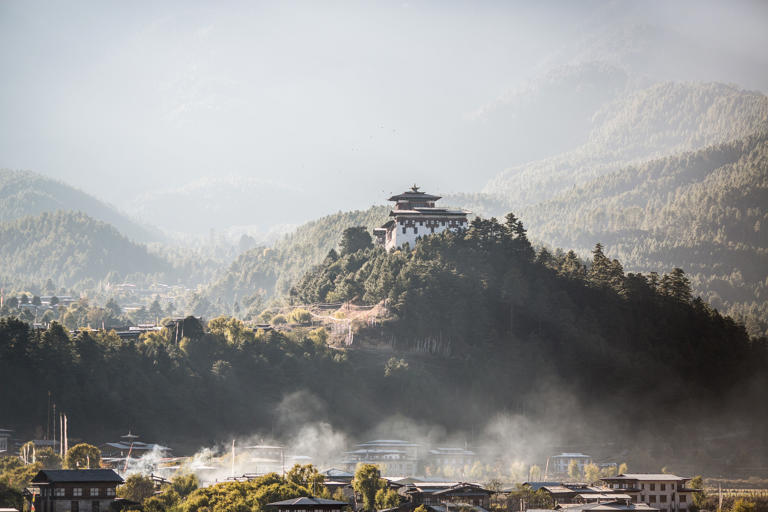

IMAGES
VIDEO
COMMENTS
Plan your trip with the Bhutan travel guide from BBC Travel. Get inspired with insider tips, photos and videos. Decide where to stay and what to do. Plus we will guide you to the best hotels ...
1. Independent travel is finally possible, but a tour operator is still the way to go. Since reopening in 2022, Bhutan has scrapped its all-inclusive tour-package minimum, and initially raised the Sustainable Daily Fee (SDF) to US$200 before reducing it to US$100, valid now through September 2027.There is a 50% discount for kids ages six to 11, with no SDF for those under six.
Bhutan country profile. 21 March 2023. Bhutan is a tiny and remote kingdom nestling in the Himalayas between its powerful neighbours, India and China. Almost completely cut off for centuries, it ...
Once the lifeline of Bhutan, the 403km Trans-Bhutan Trail connected the affluent western districts of Haa to the remote far eastern Trashigang.The trail date...
Bhutan was selected as one of Lonely Planet's best places to travel in 2023. Read more about the destination, including trekking itineraries, at our Best in Travel 2023 website. Lorna Parkes' trip to Bhutan was organized by the non-profit Trans Bhutan Trail.
Travel | September 14, 2022. The 250-Mile Trans Bhutan Trail Will Reopen After 60 Years. After a major restoration project, the path connecting 400 cultural and historic sites is once again passable
The Bhutan Tourist Corporation Limited (BTCL) is highly recommended for making travel bookings to Bhutan. This company is owned by members of the royal family and advertises itself as Bhutan's number one travel agency since 1991. The drivers, guides, and accommodations provided are excellent.
Bhutan, the beautiful land-locked nation in the Eastern Himalayas, has always been steeped in mystery. In this revealing BBC travel documentary, Absolutely Fabulous star Joanna Lumley retraces the steps her grandparents took in the country 60 years before. Through her eyes, a world that challenges accepted ideas of wealth and happiness is explored.
Here's why green-minded travellers should take advantage of Bhutan's reduced visitor fees in 2023. The environment is king in Bhutan. Environmental conservation is one of the four pillars of ...
Until 2022, tourists to Bhutan were charged a daily tourist fee of $250 ($200 in the low season) for every day spent in the country. This might sound expensive, but the fee covered food, accommodation, transport, guide fees and most of the other essentials tourists needed for a once-in-a-lifetime trip. Also included in the daily charge was a ...
Bhutan's Dark Secret to Happiness - BBC Travel. Bhutan's Enlightened Experiment - National Geographic. Bhutan Rising - WWF. Bhutan: Travel Blueprint - Wanderlust UK. Date & Price. 2024 Dates 29 Sept - 1 Nov 34 days. Trek Price $8820 + NO Single Supplement for Single Tents!
Active Travel: Bhutan is a wonderland of hiking, trekking, mountain biking, rafting, birding, fishing, horseback riding and increasingly, wildlife viewing. The country's single best-known ...
BBC News. Sandwiched between China and India, the tiny Himalayan nation of Bhutan is feeling the squeeze as its giant neighbours square up for supremacy. A close ally of India, Bhutan got a shock ...
This tiny Himalayan kingdom does things differently. Having only been open to visitors for 45 years, Bhutan puts its environment, culture and wellbeing ahead of economics. This place absorbs more carbon than it creates and a Bhutan tour is perfect for trekkers, nature-lovers and Buddhist pilgrims. From the jaw-dropping Tiger's Nest to the prayer halls of Gangte Goemba, you'll experience ...
102 Hotels in Bhutan - Lowest Price Guarantee https://booki.ng/2S5gjLbTravel video about destination Bhutan.The independent kingdom of Bhutan is located ...
At 7,000 feet above sea level, Bhutan's only international airport had already been a breath of fresh air. We breezed through to be welcomed by Pencho, our guide, and Kencho, our driver.